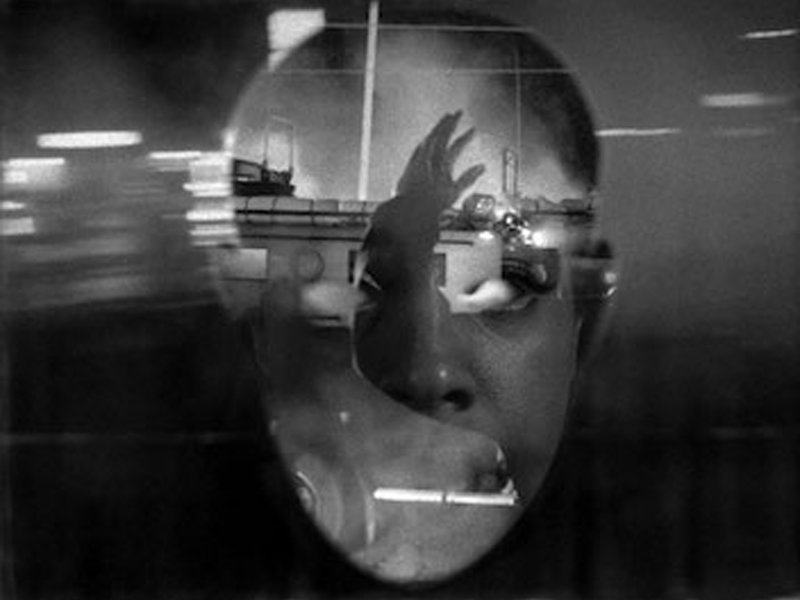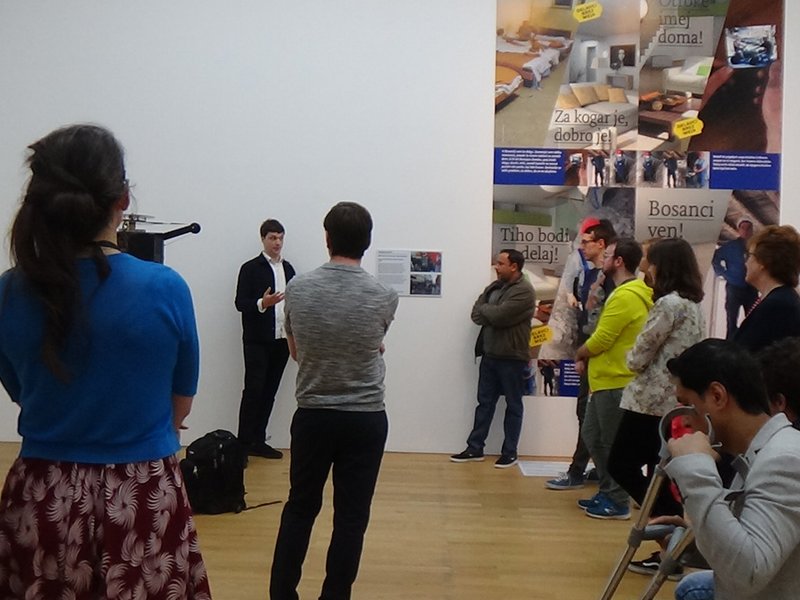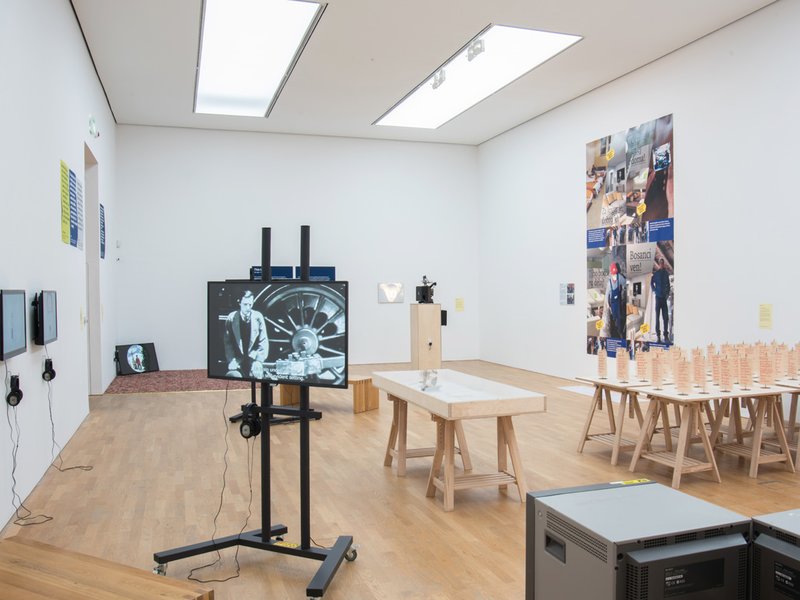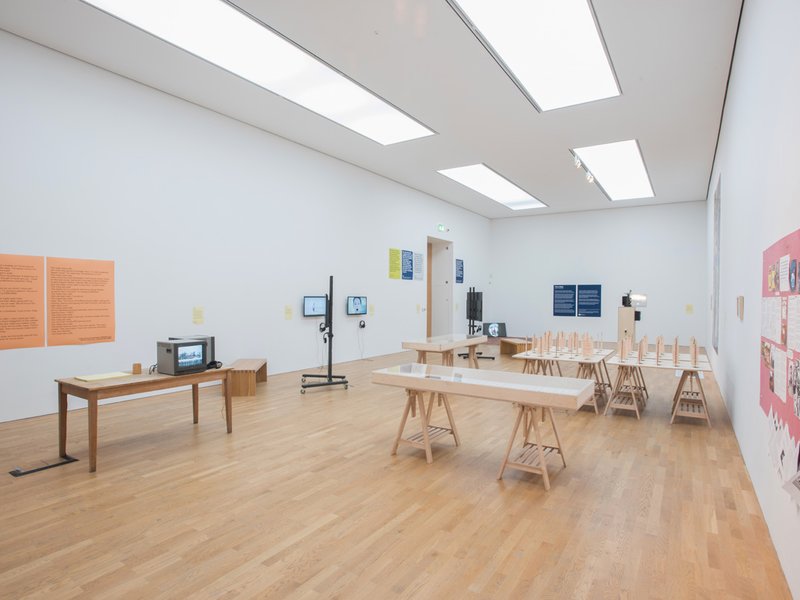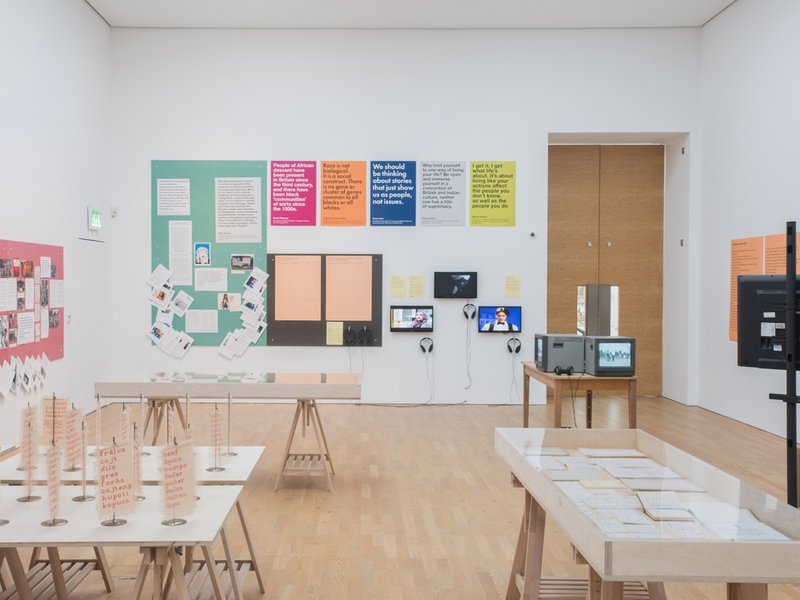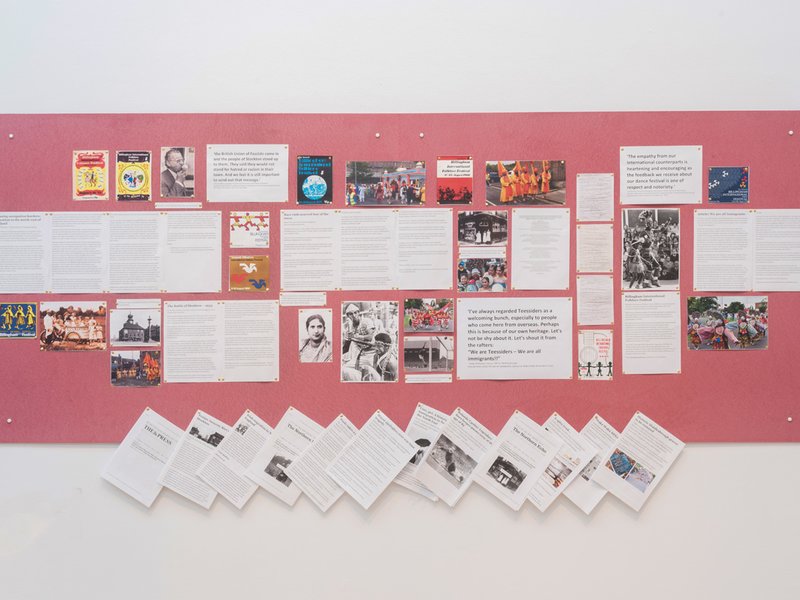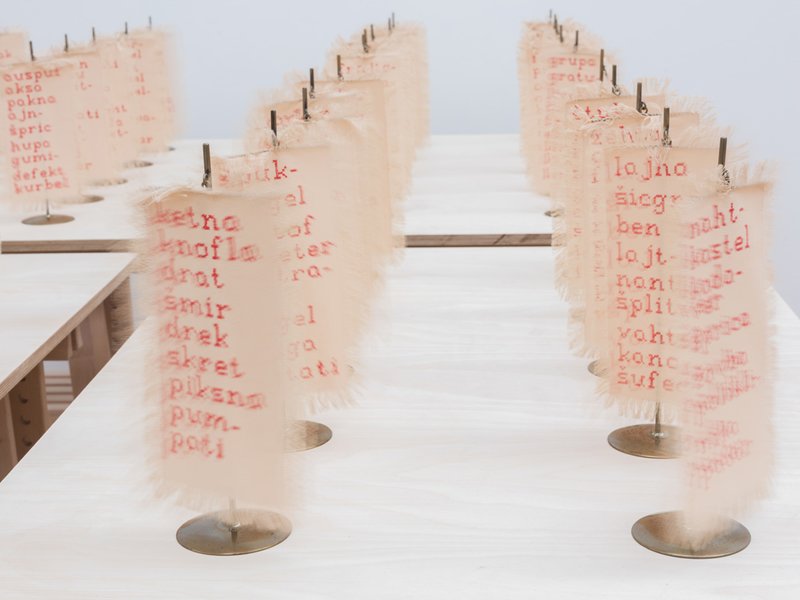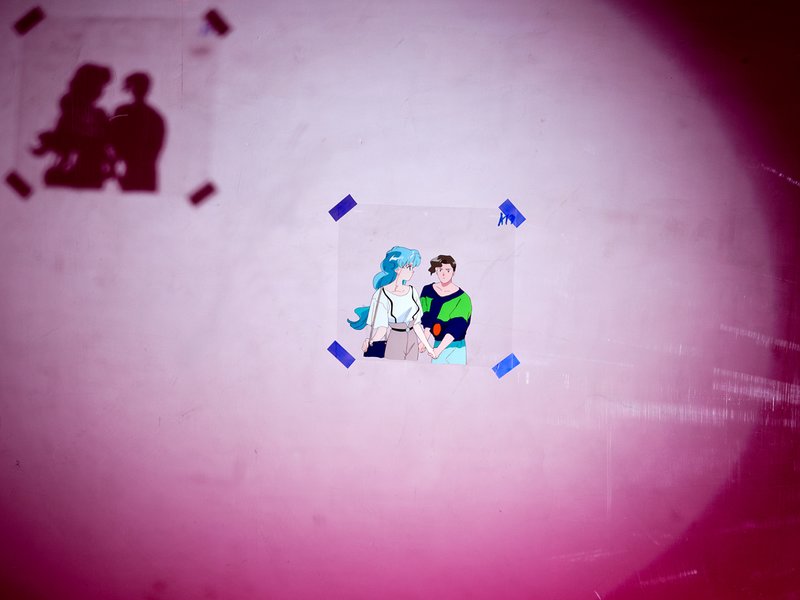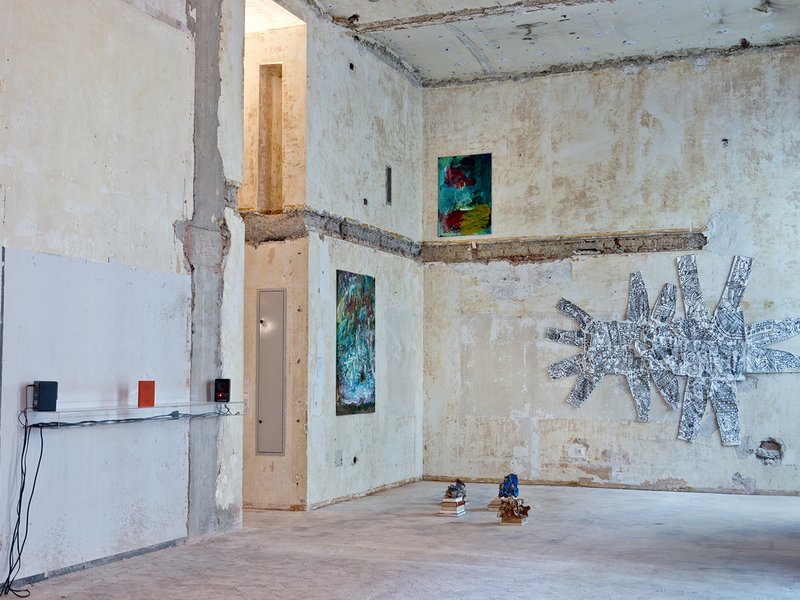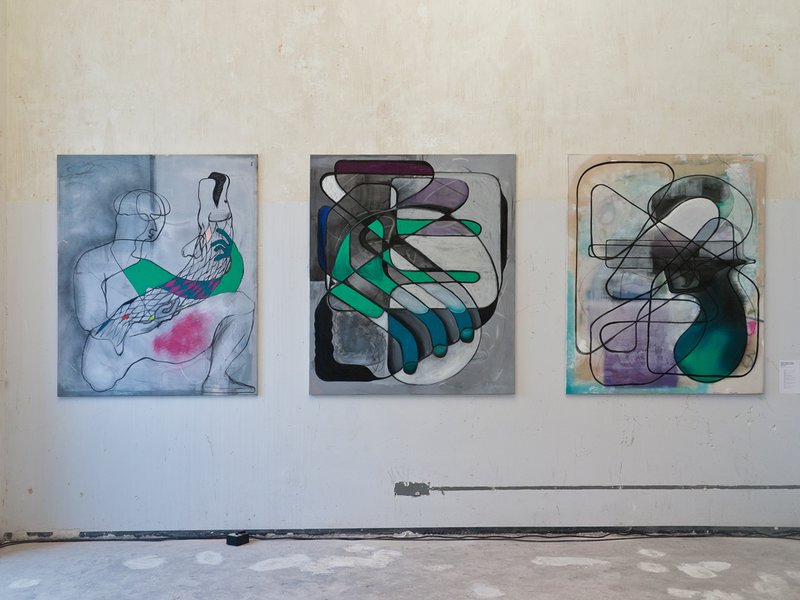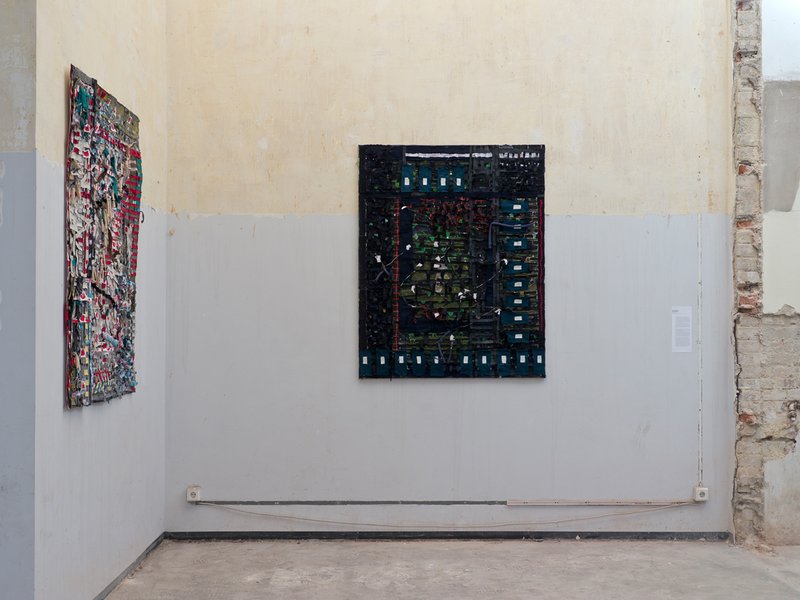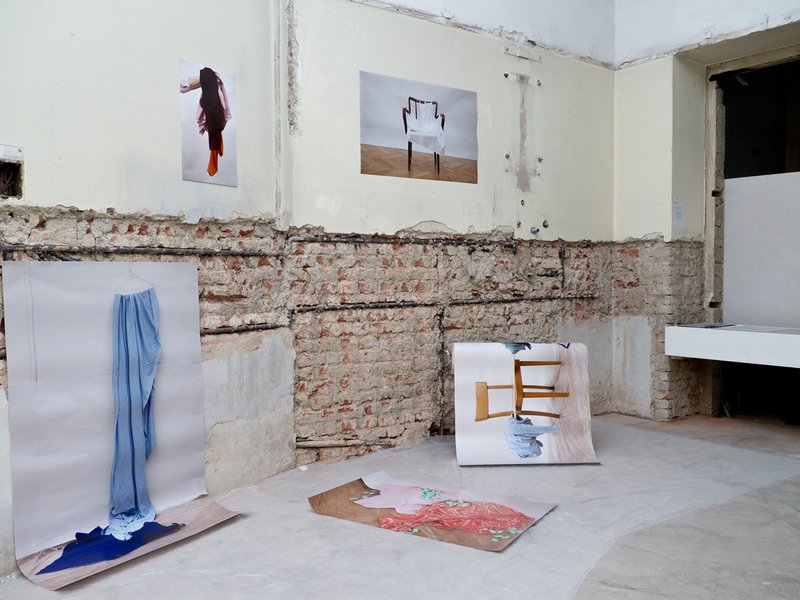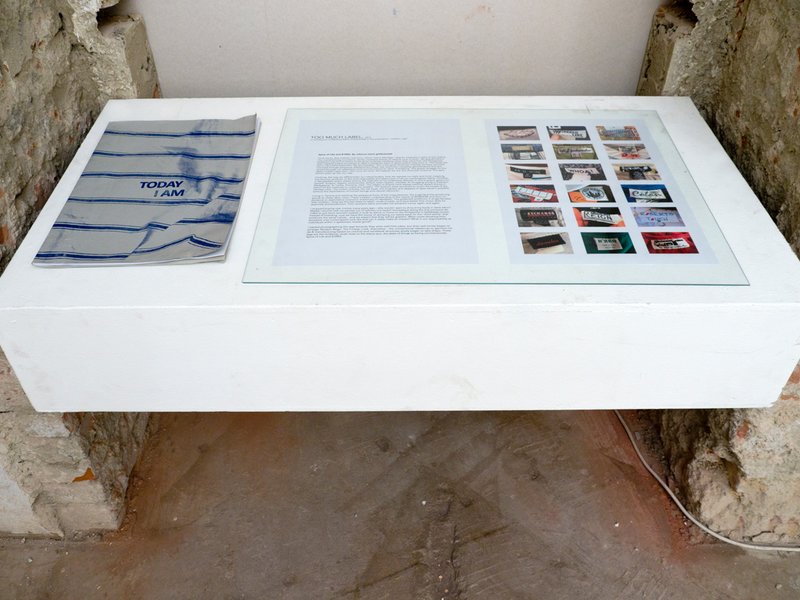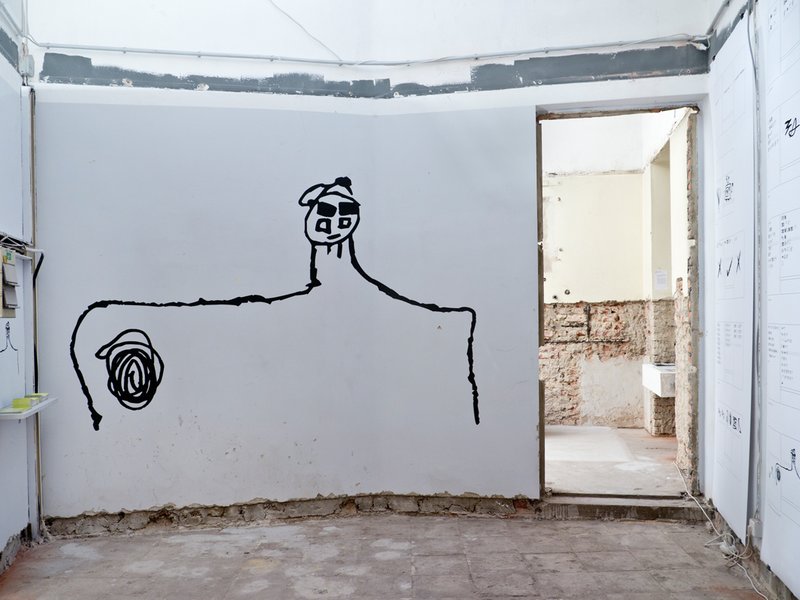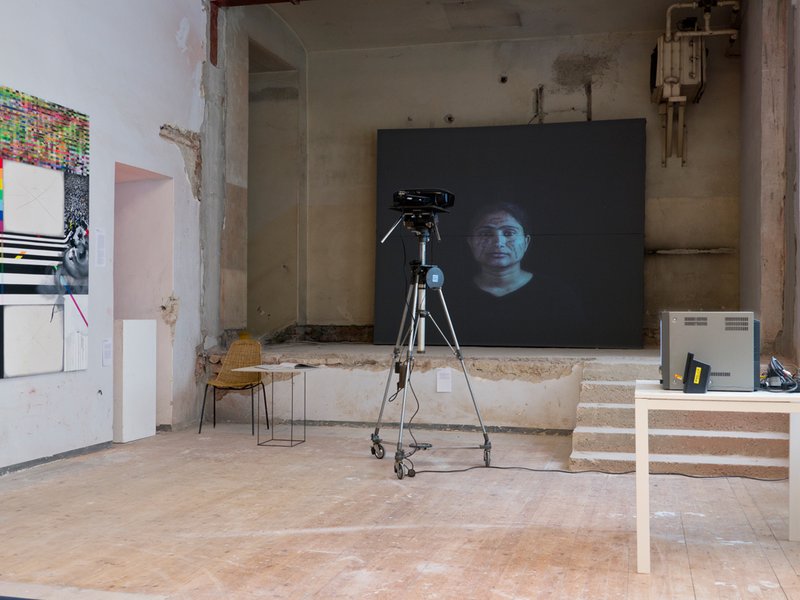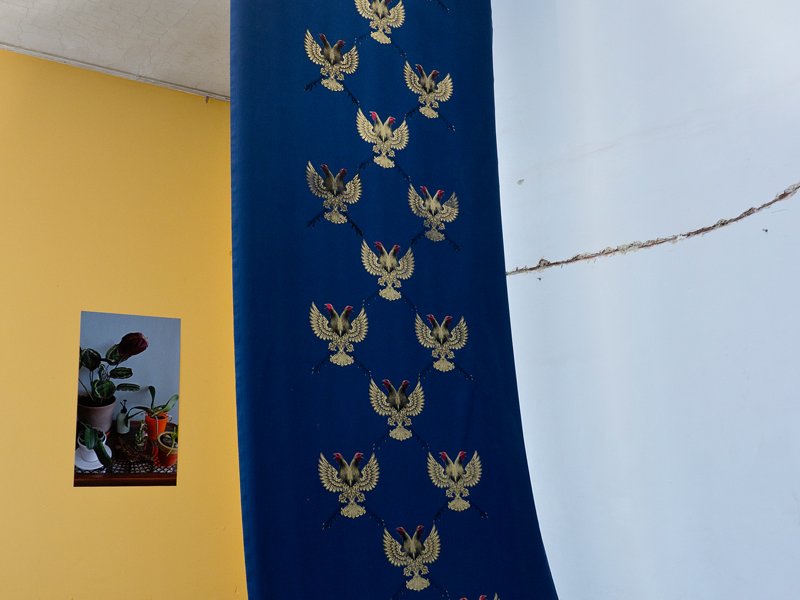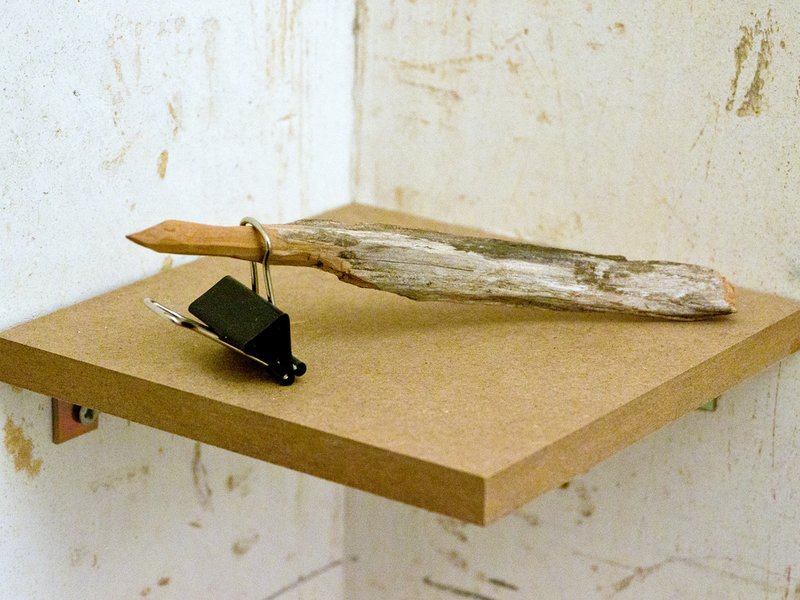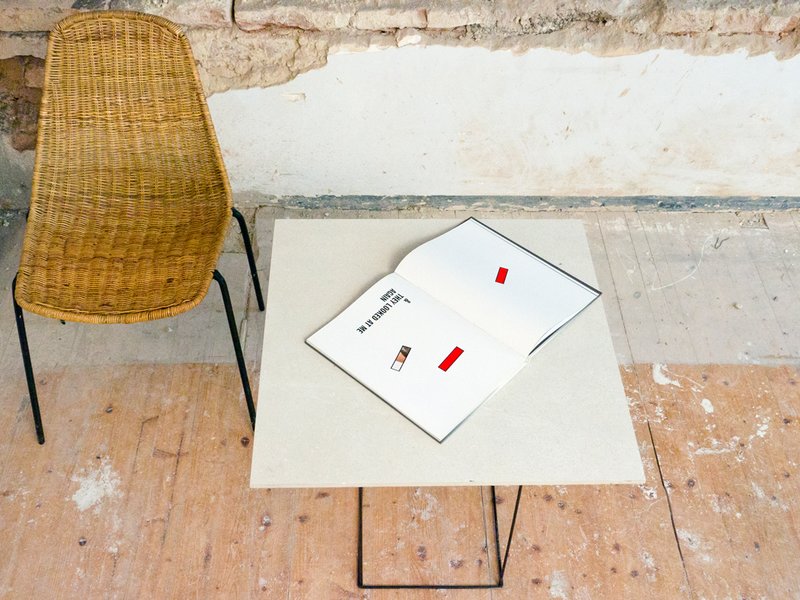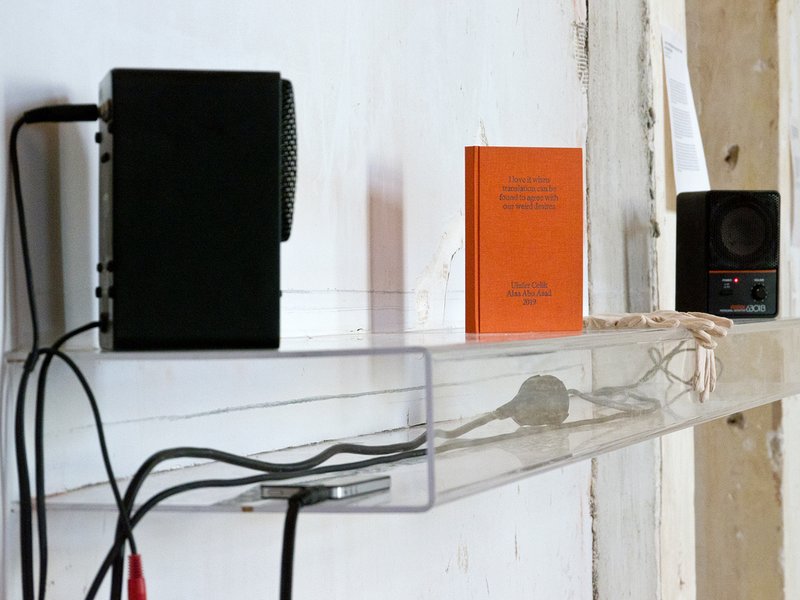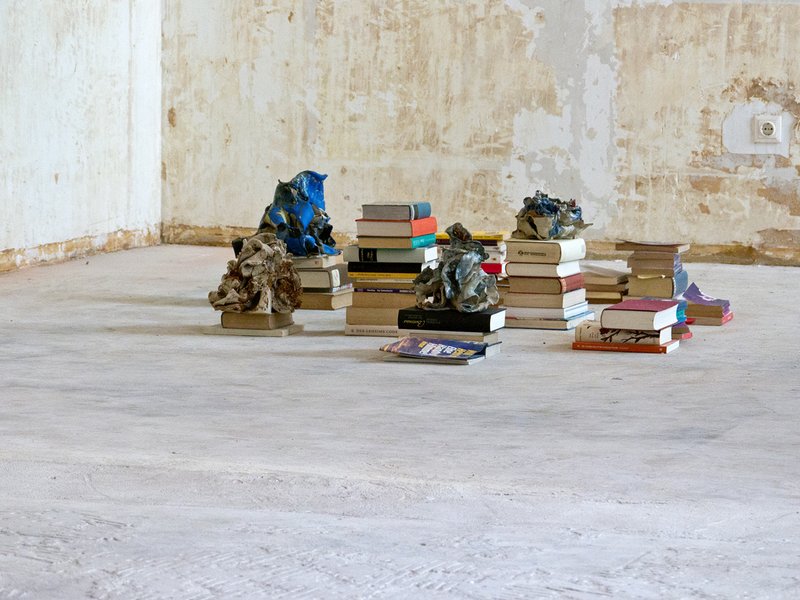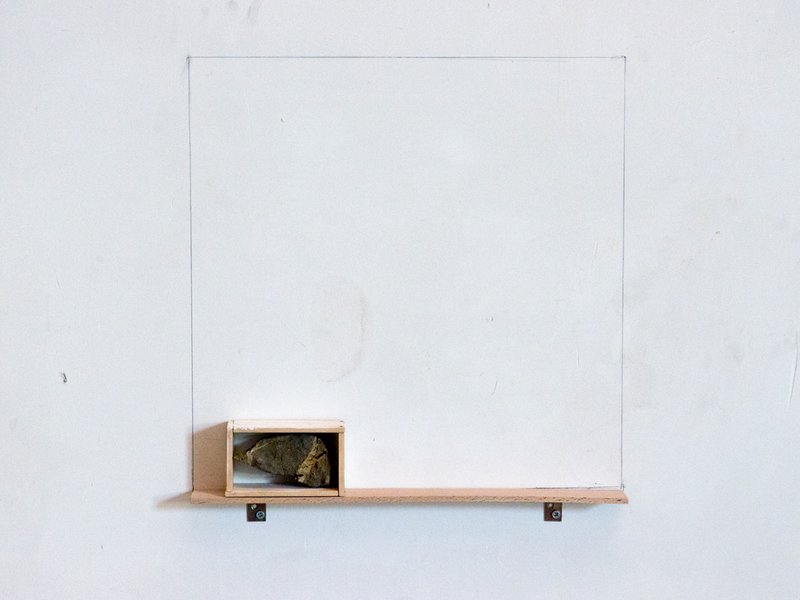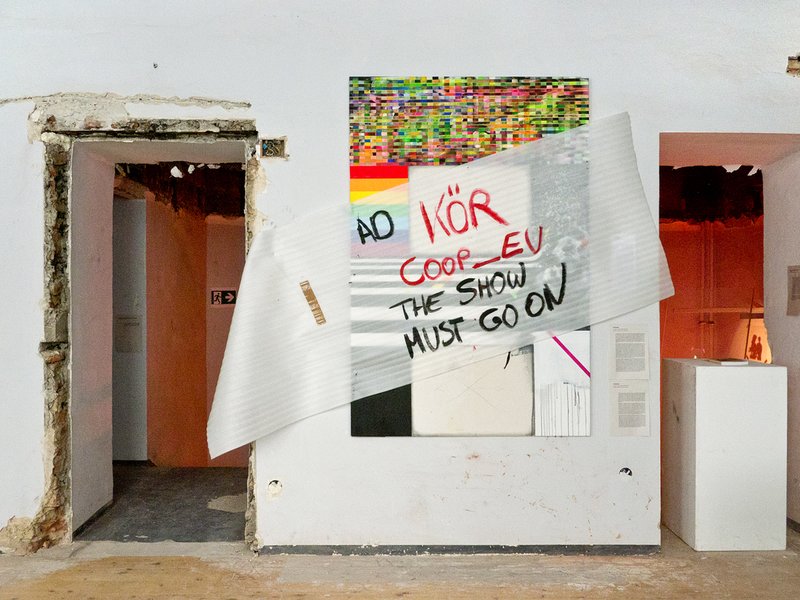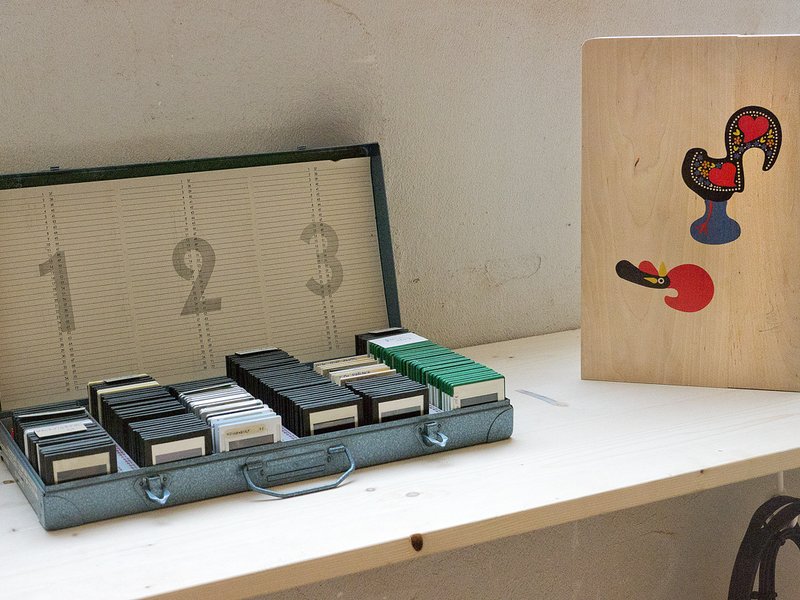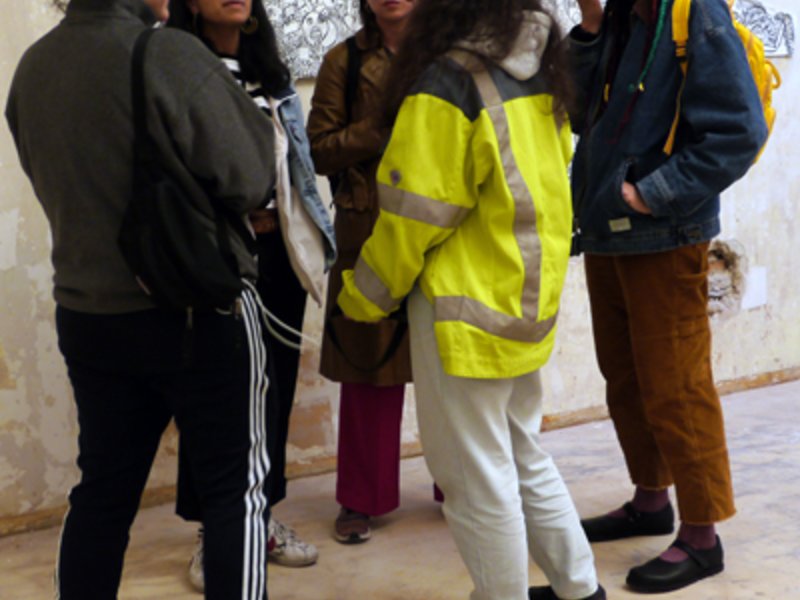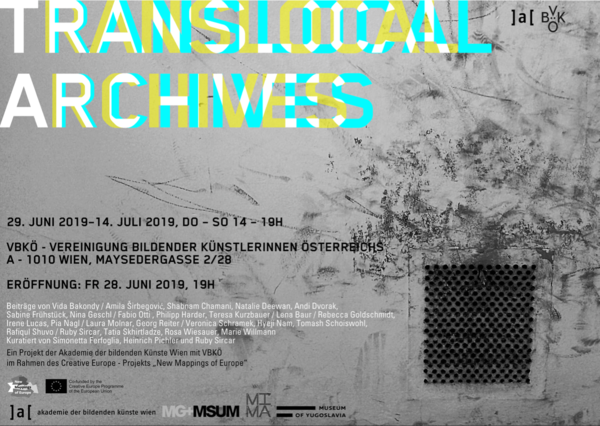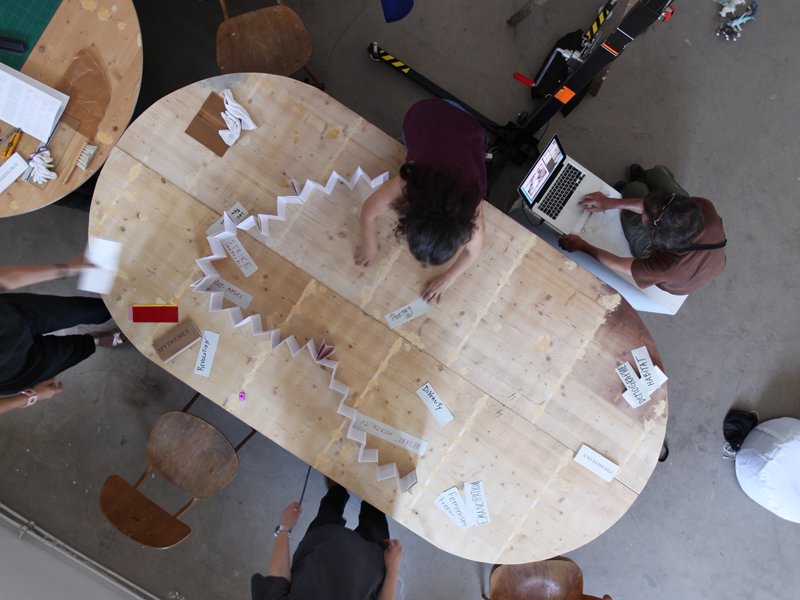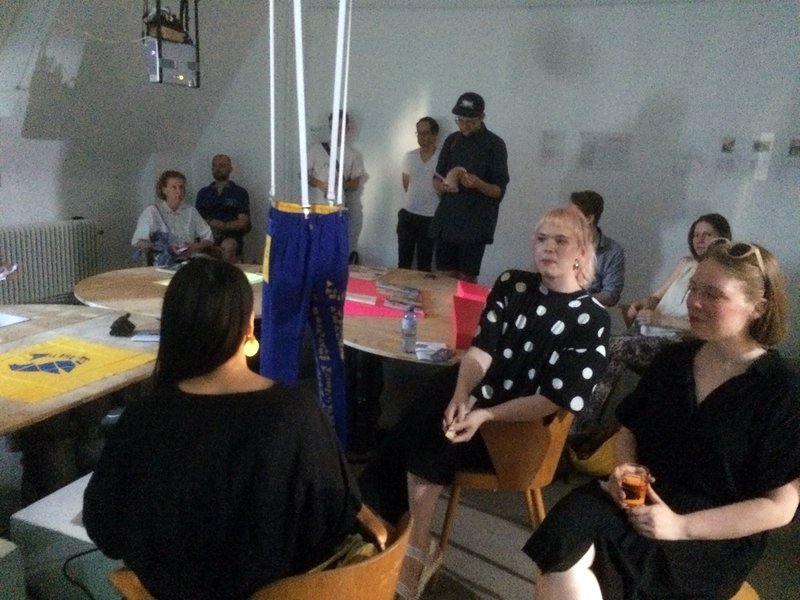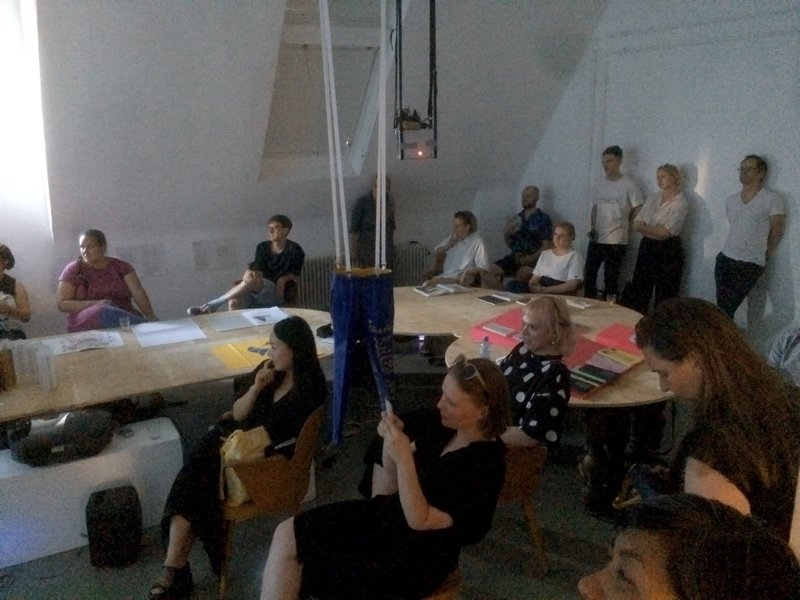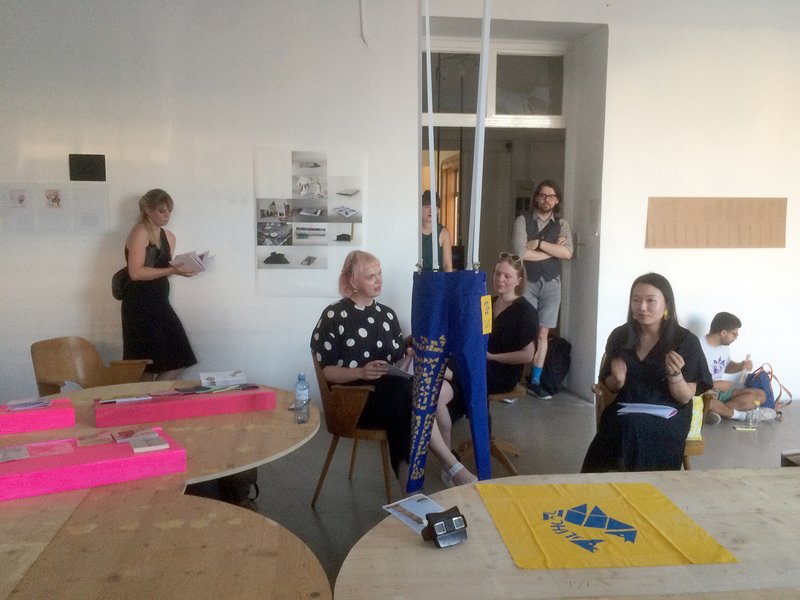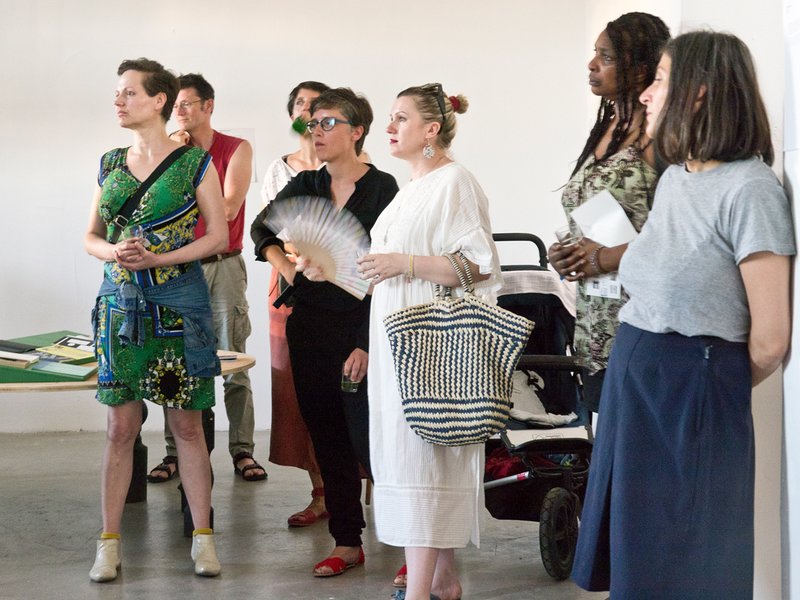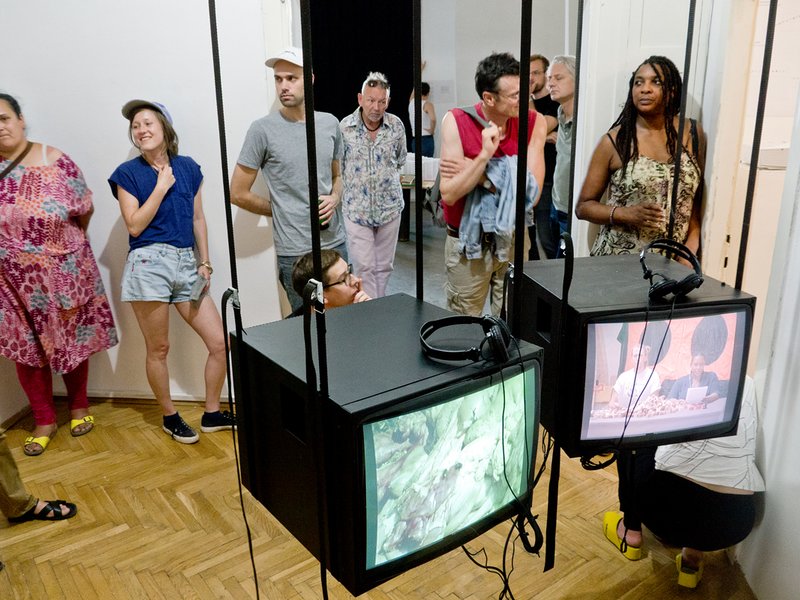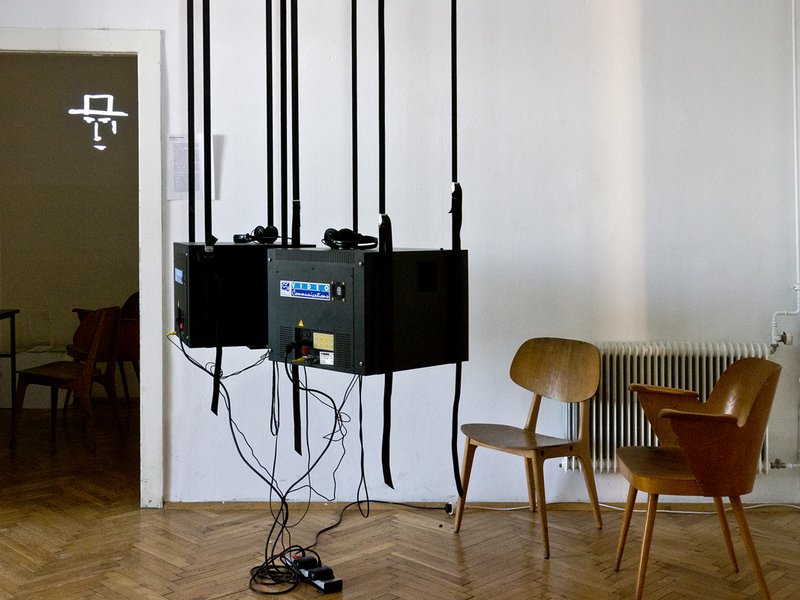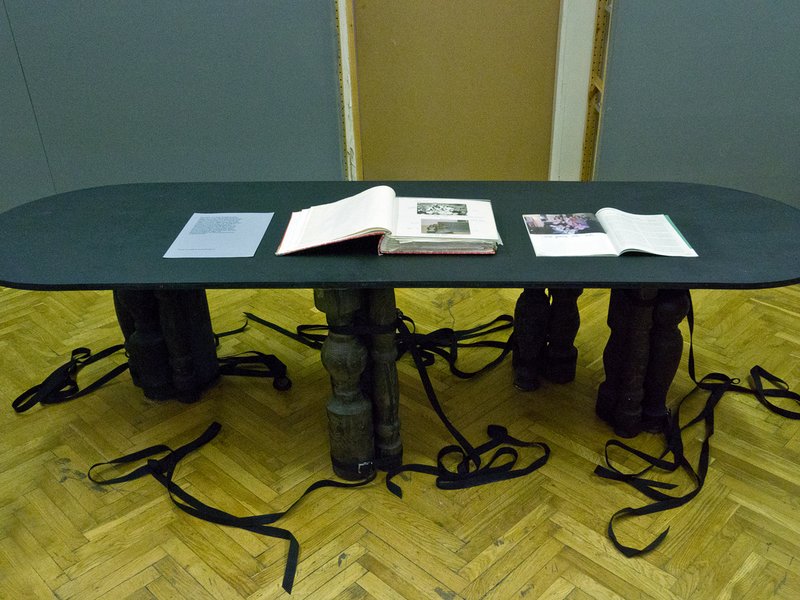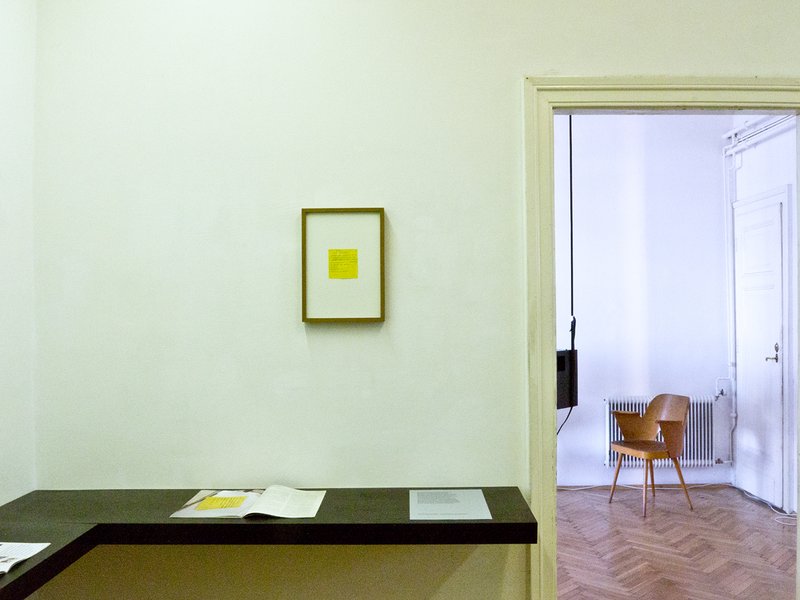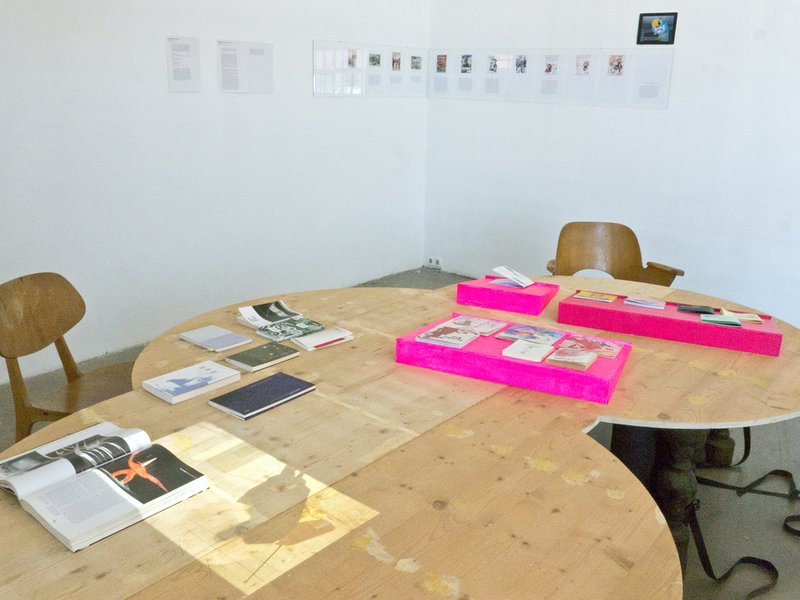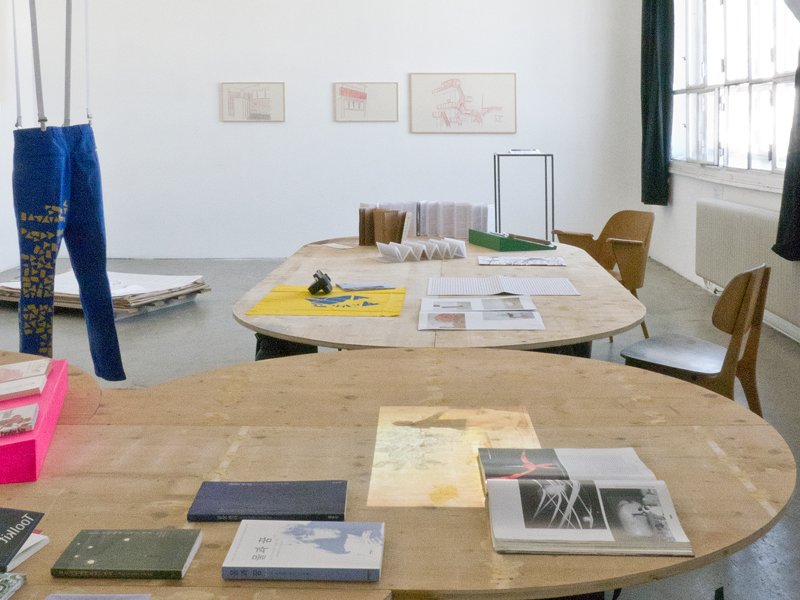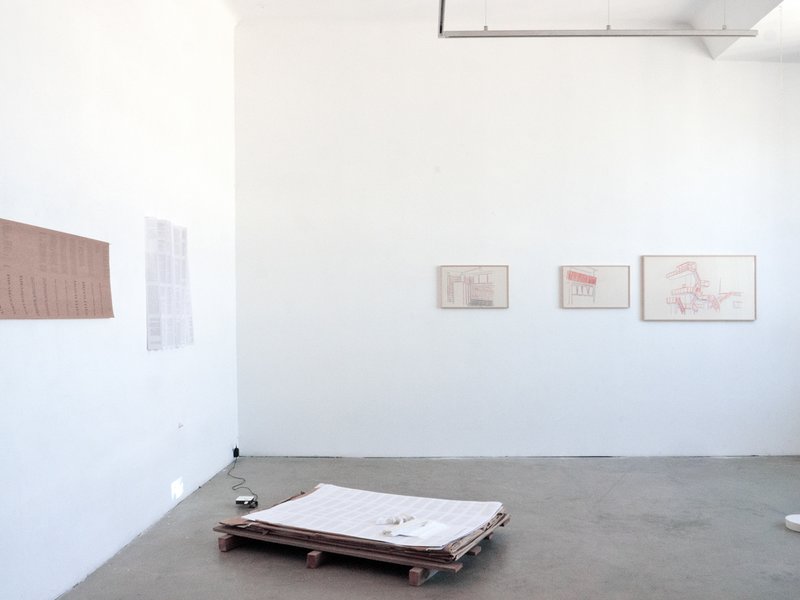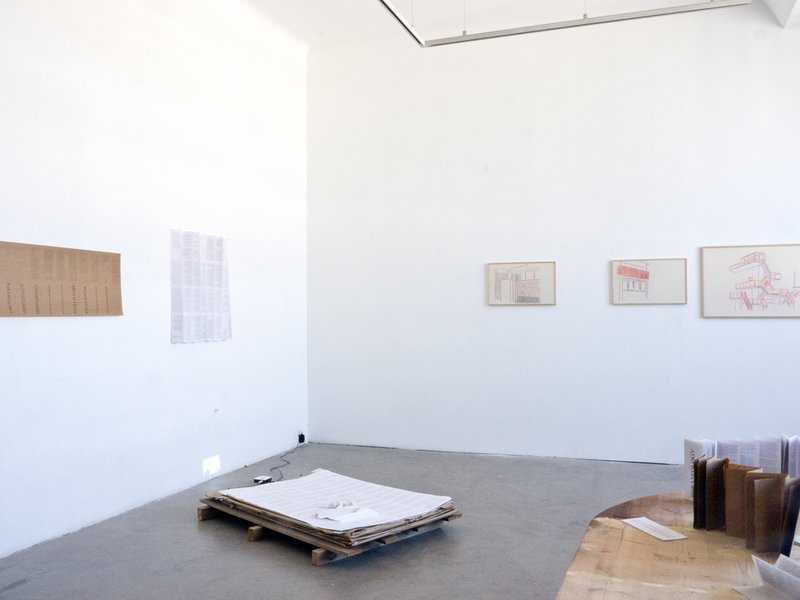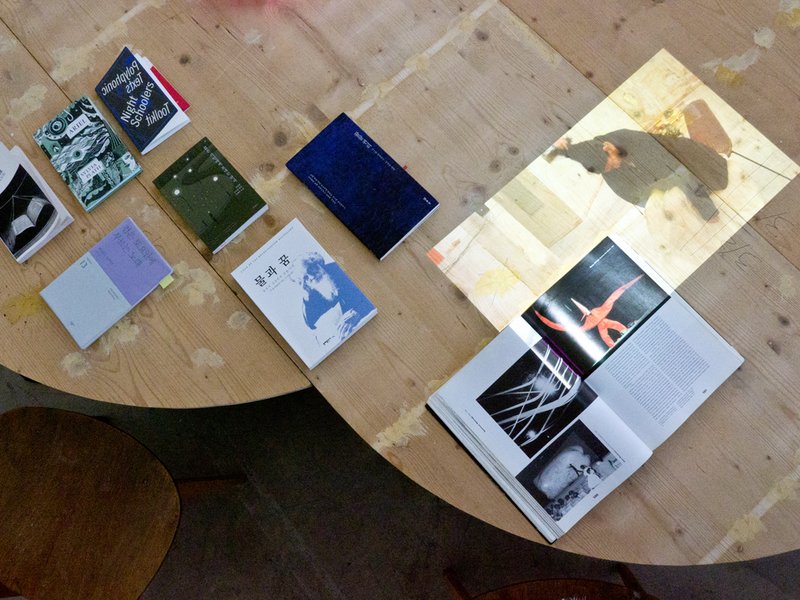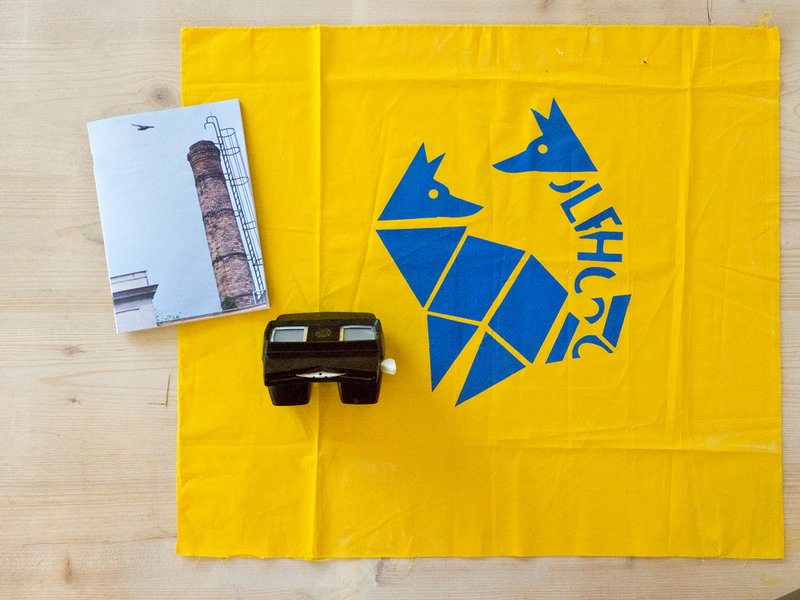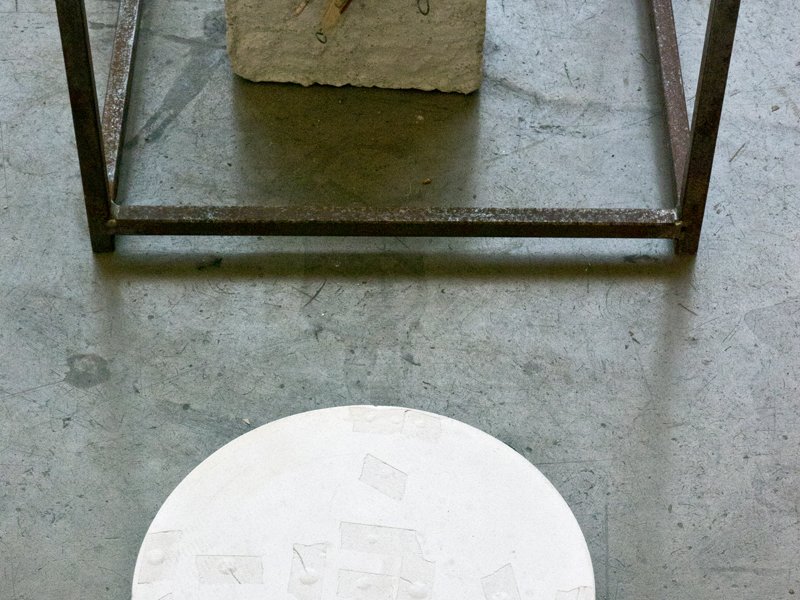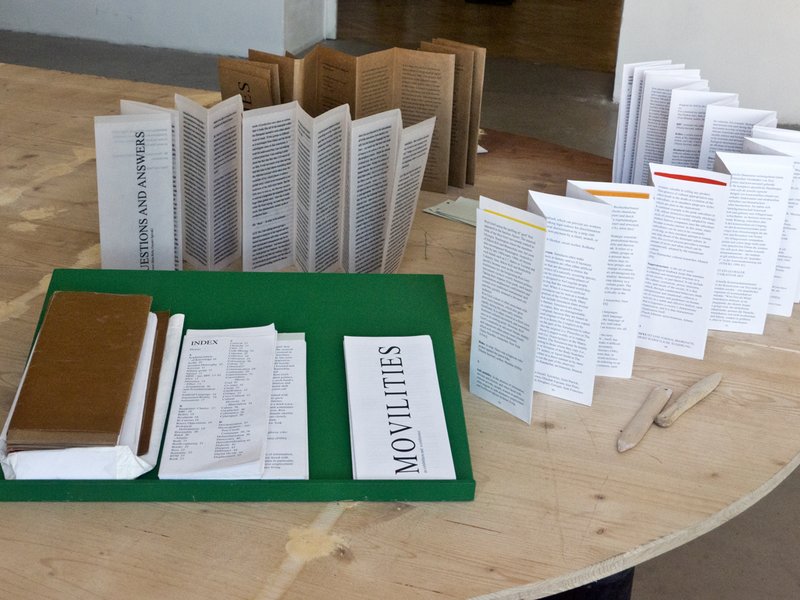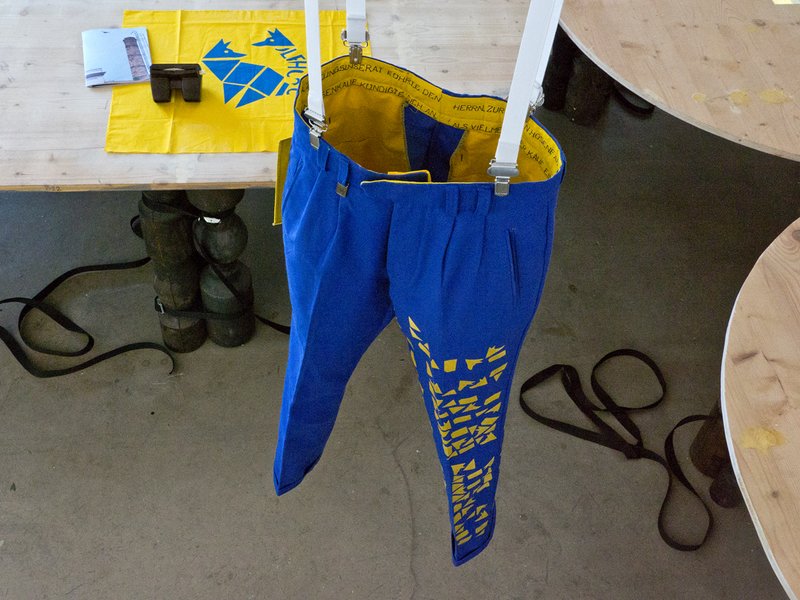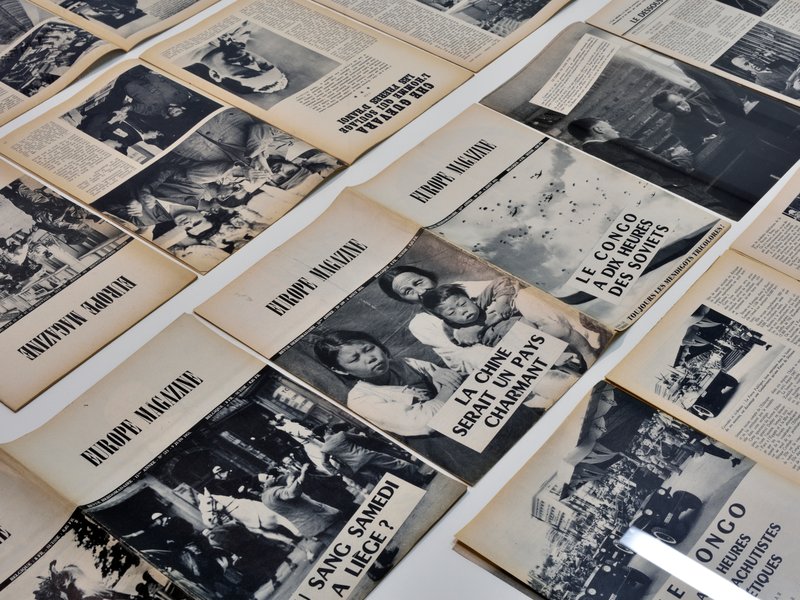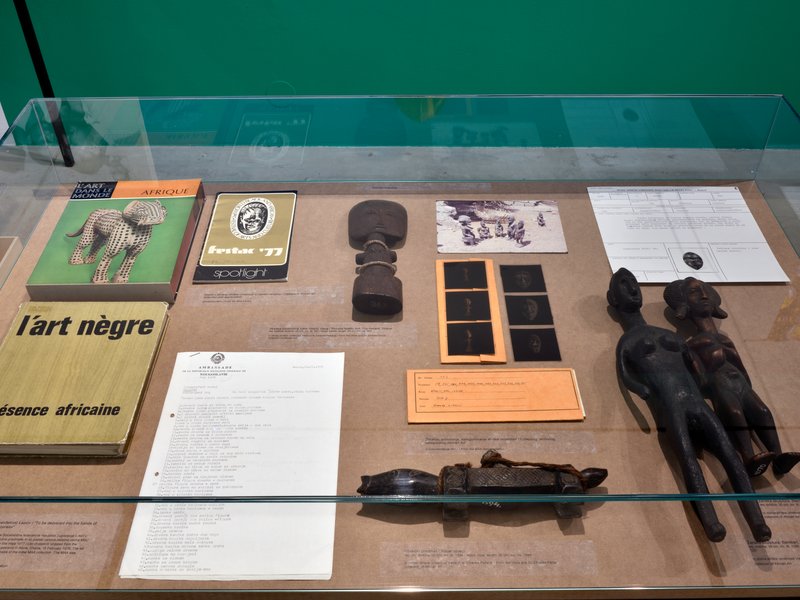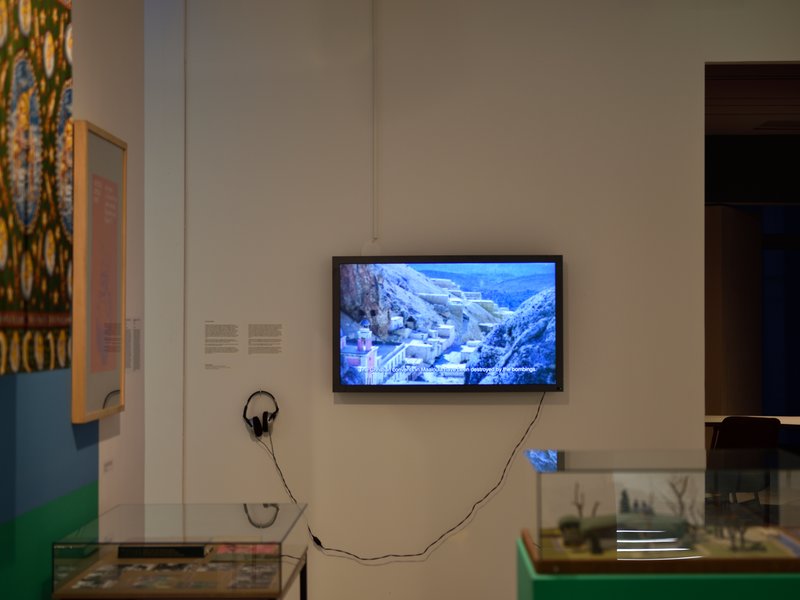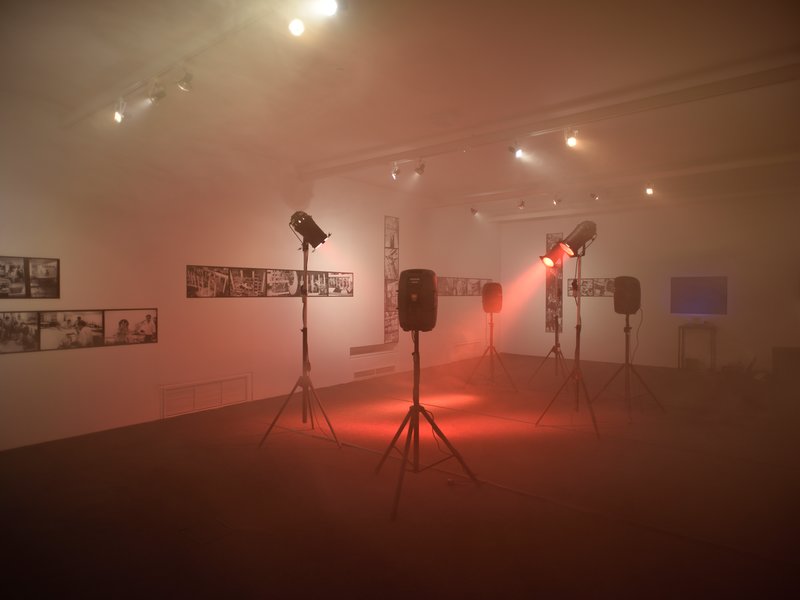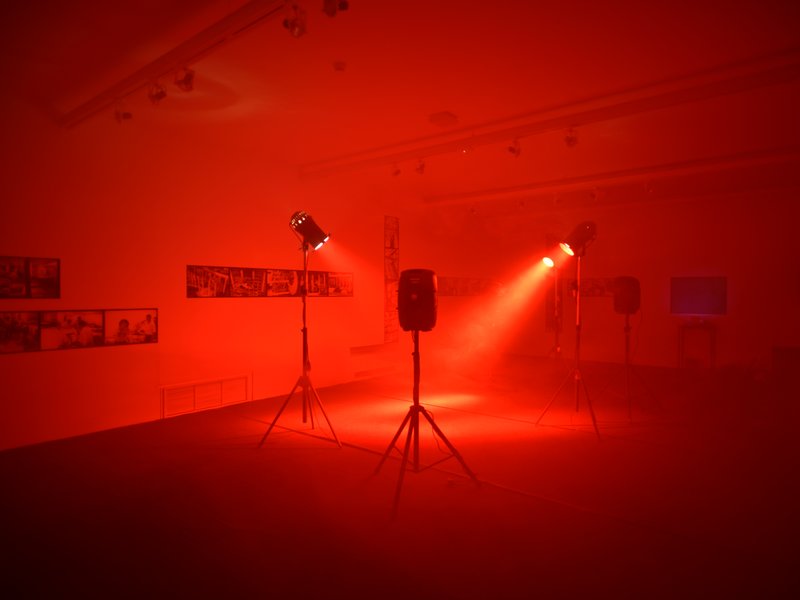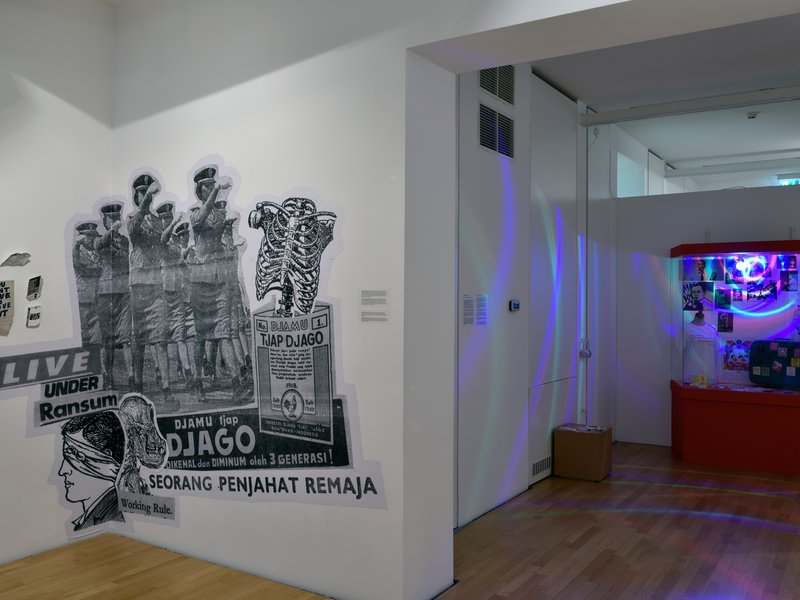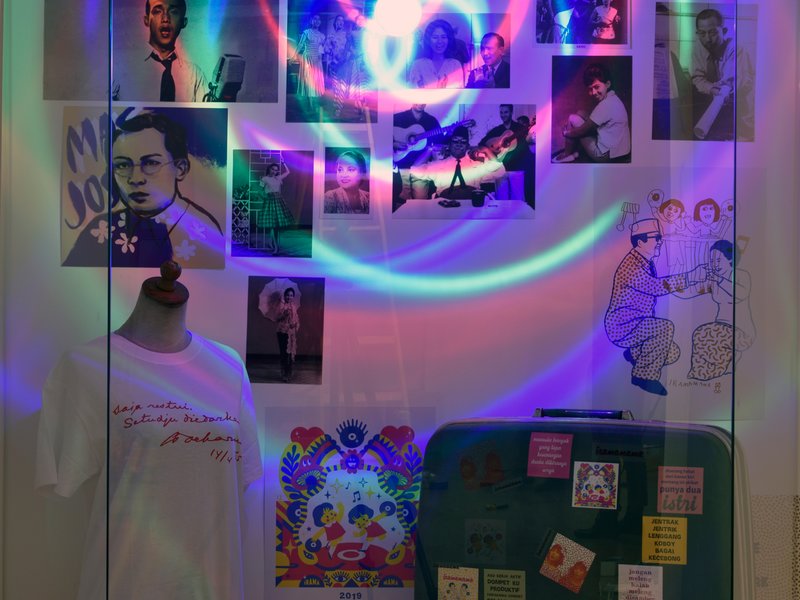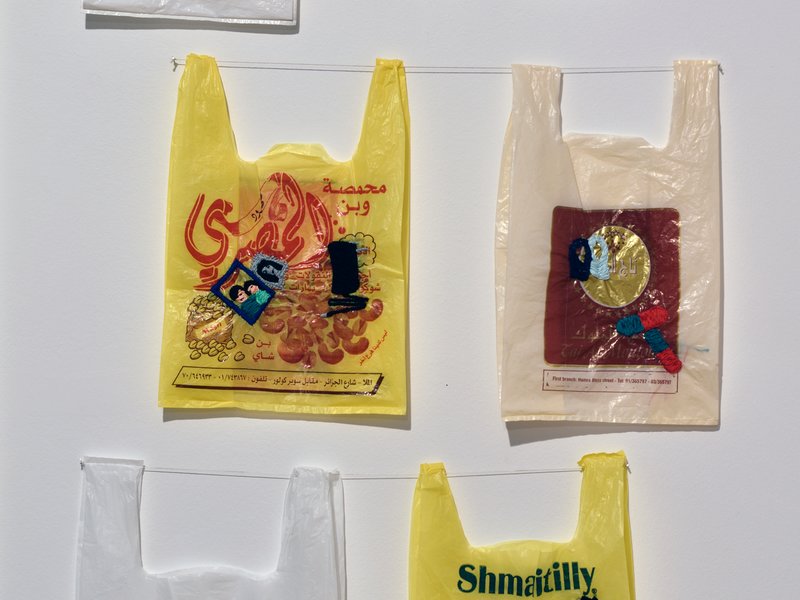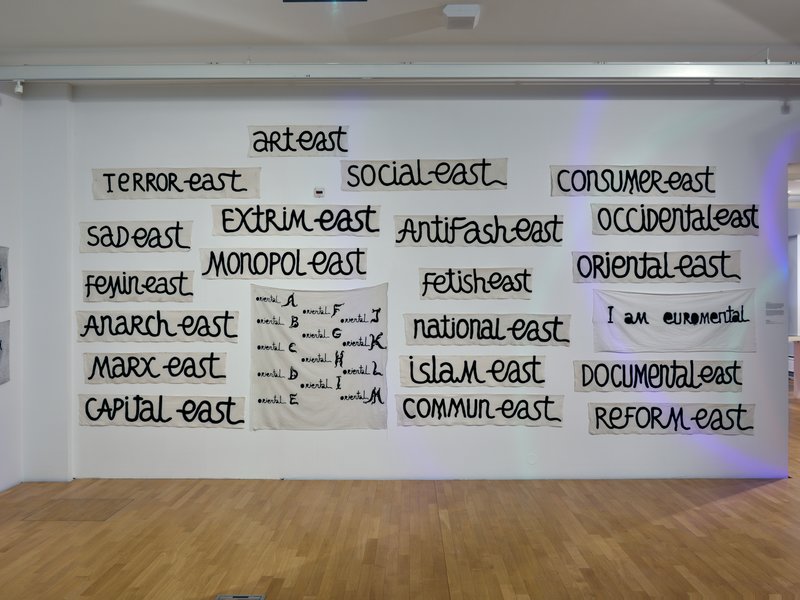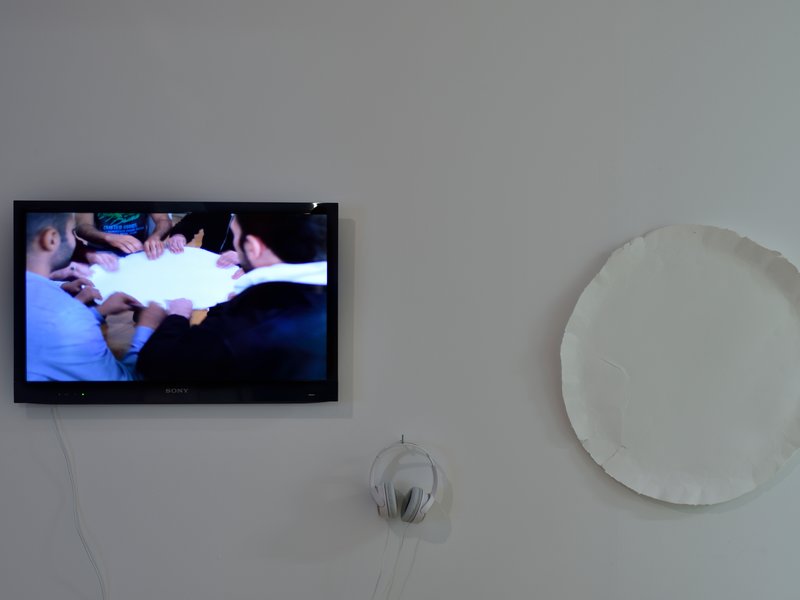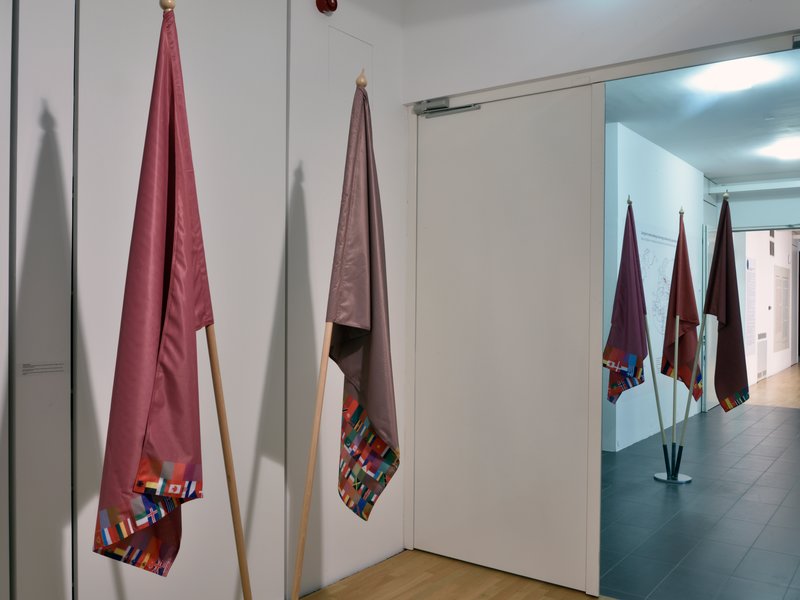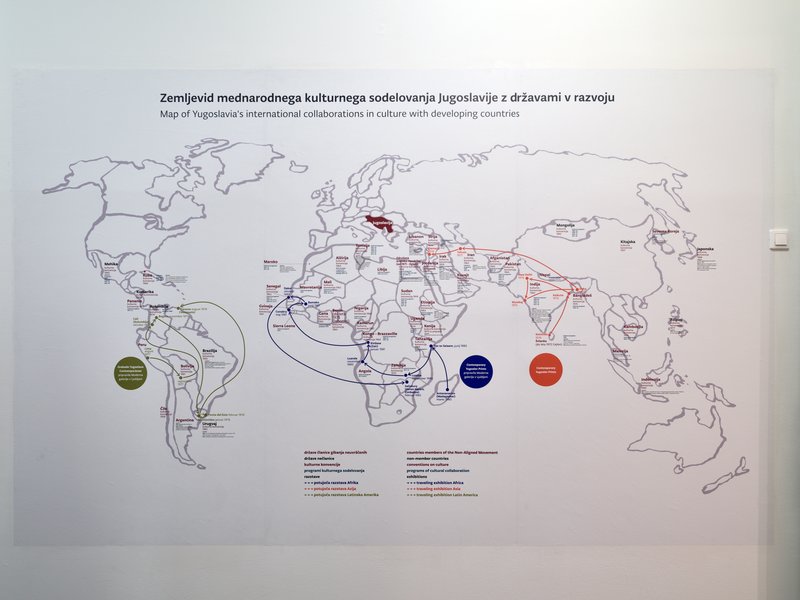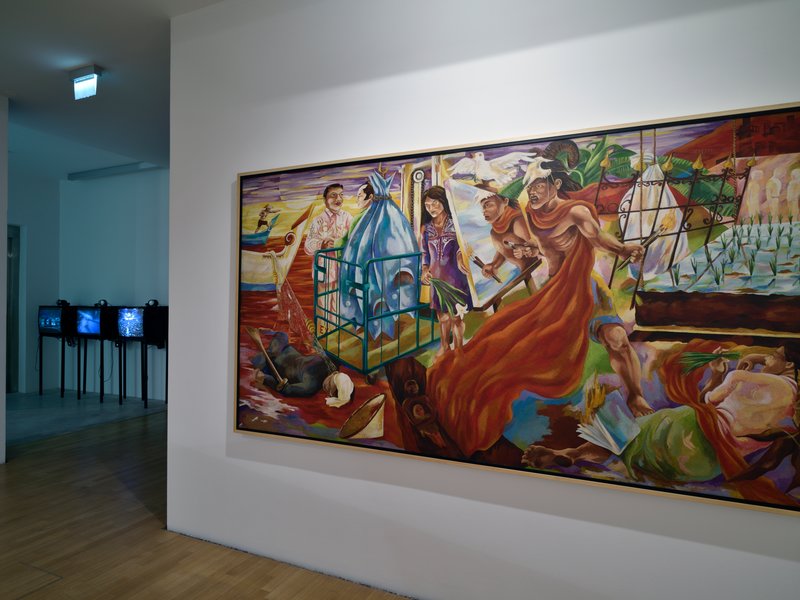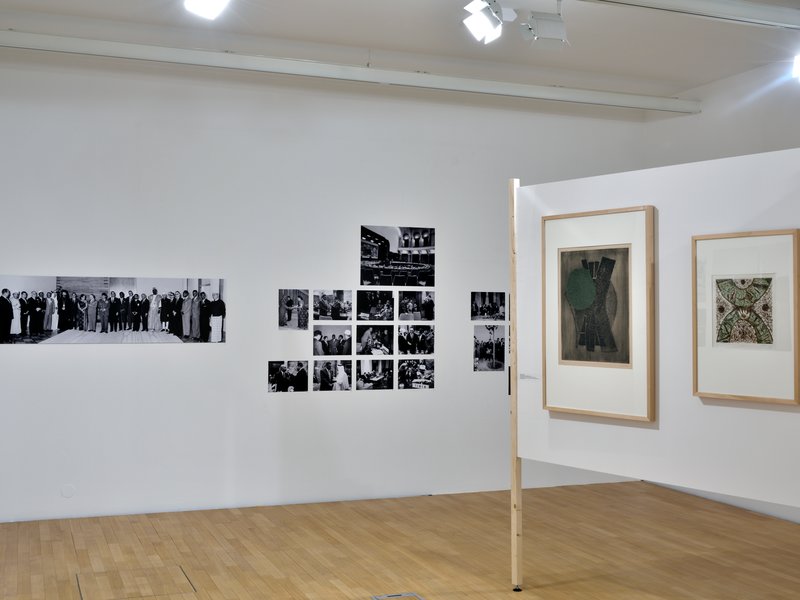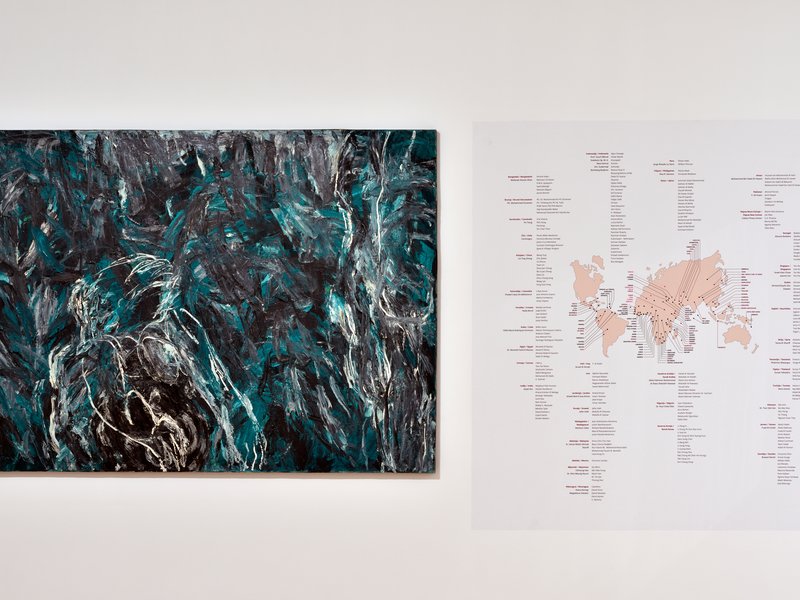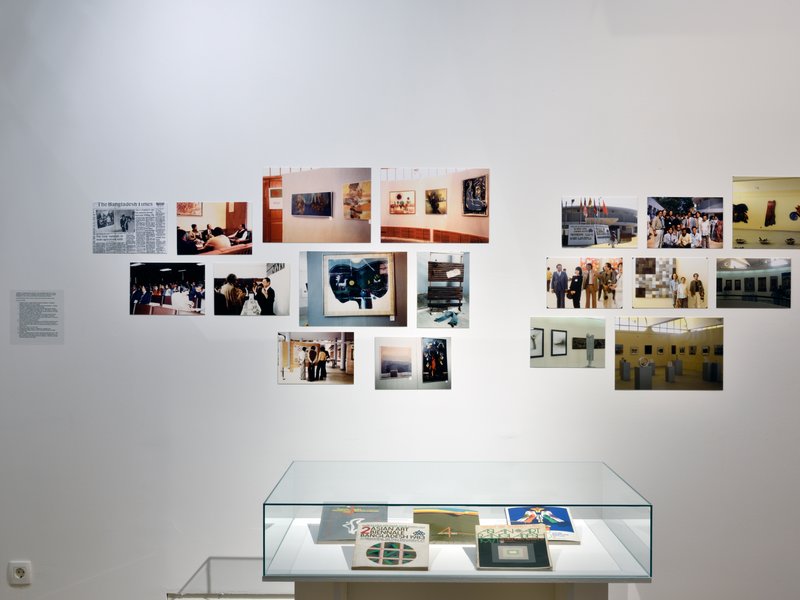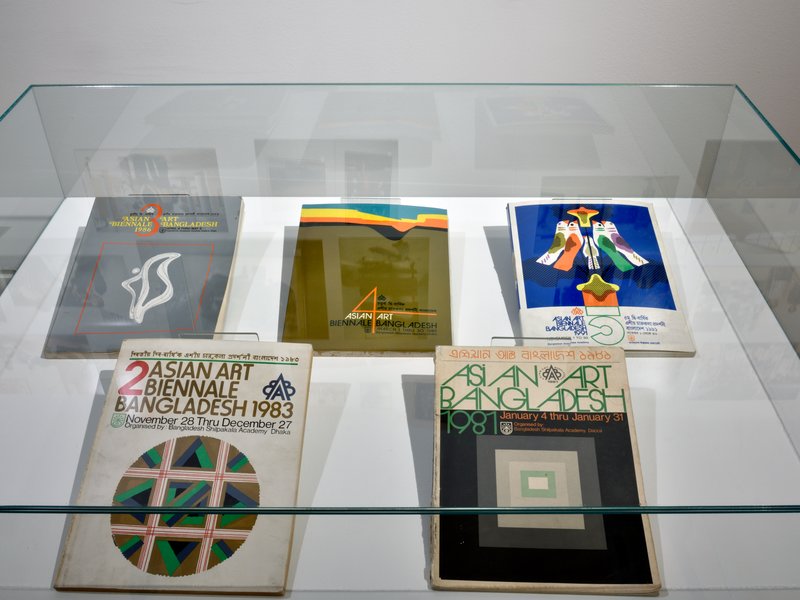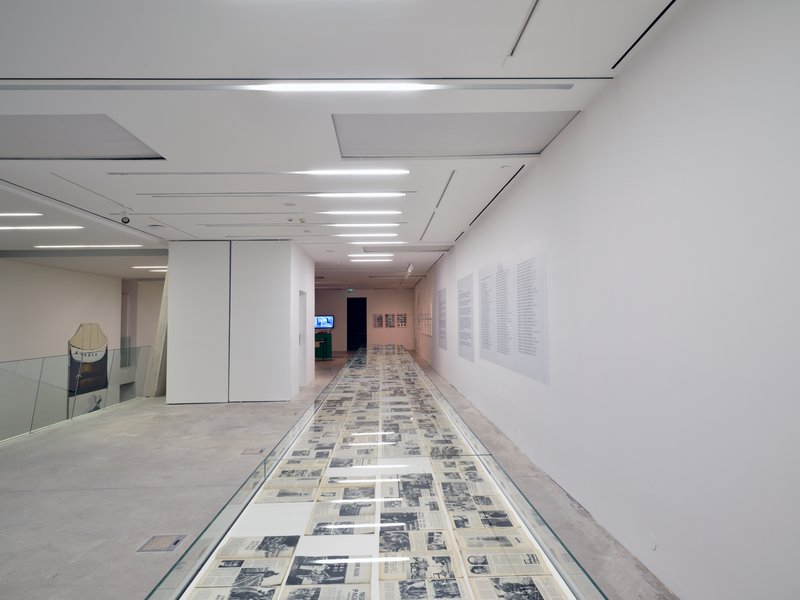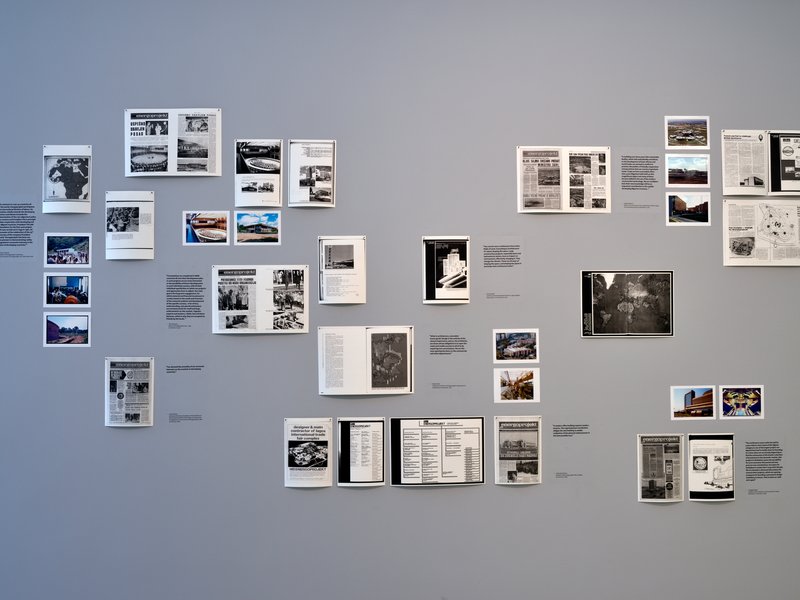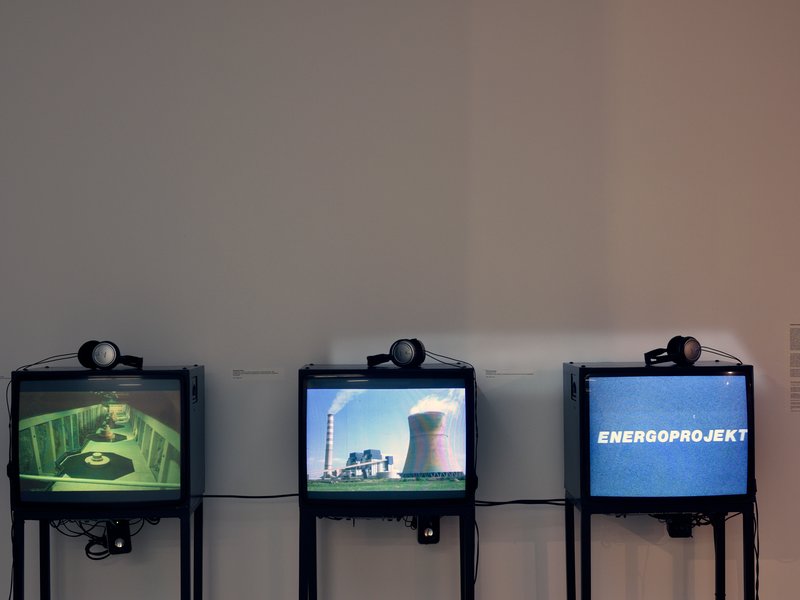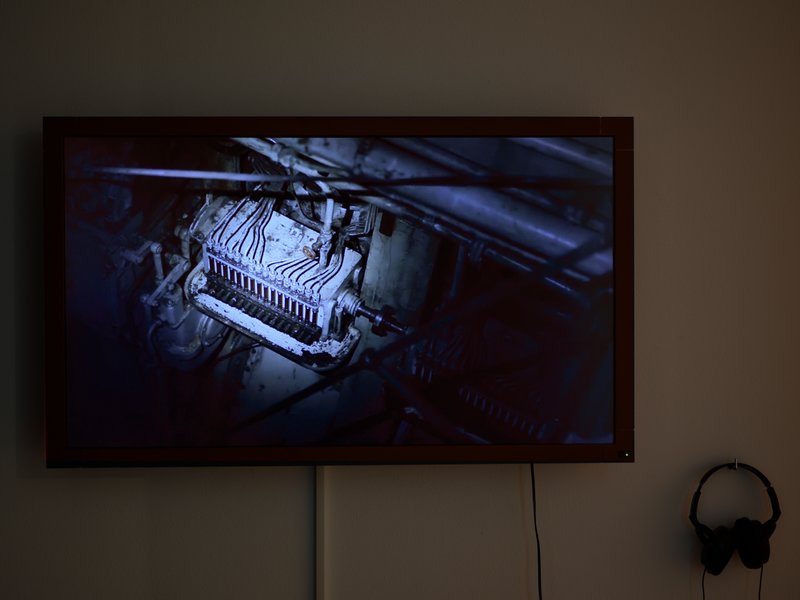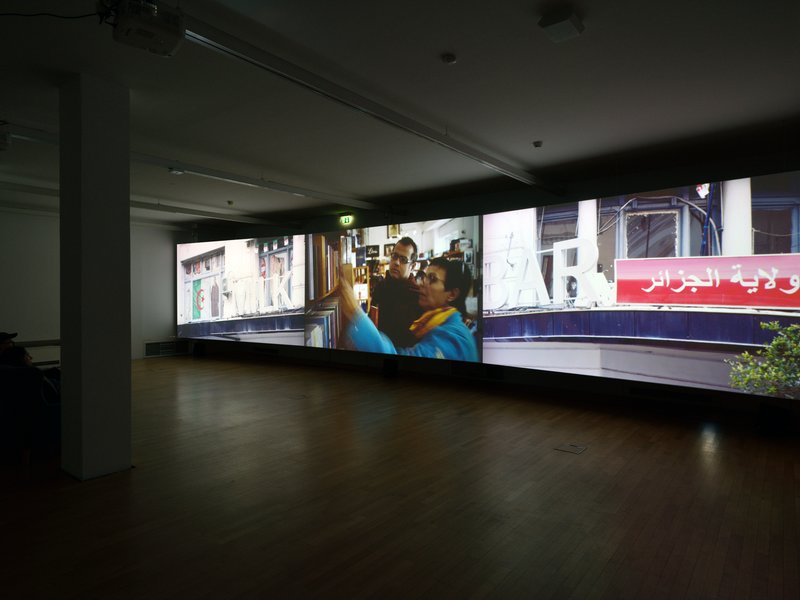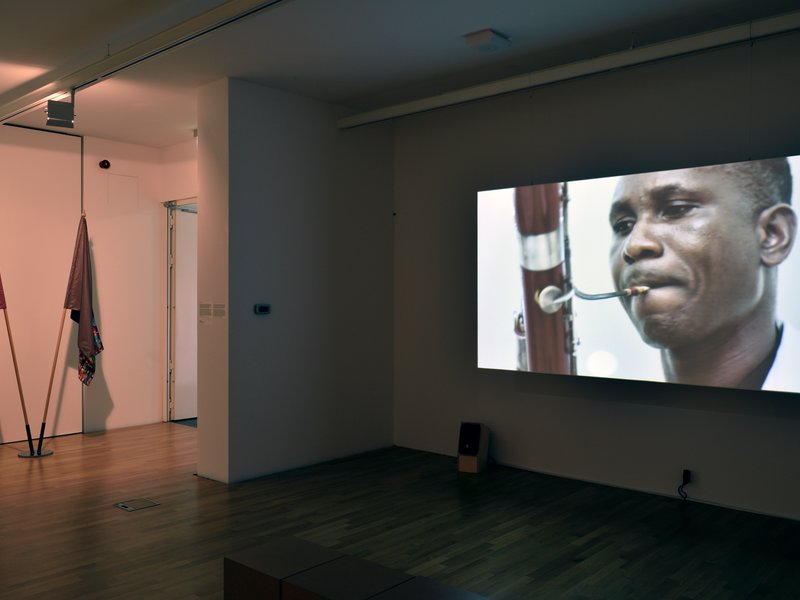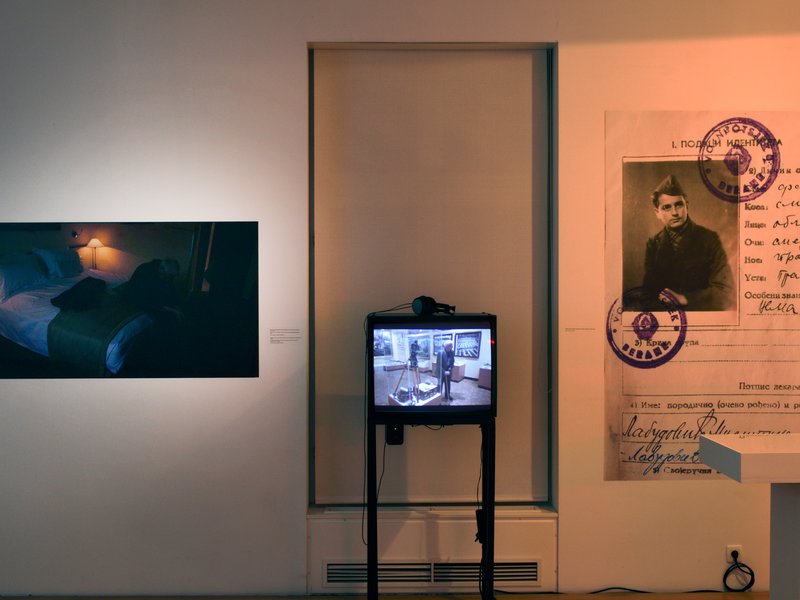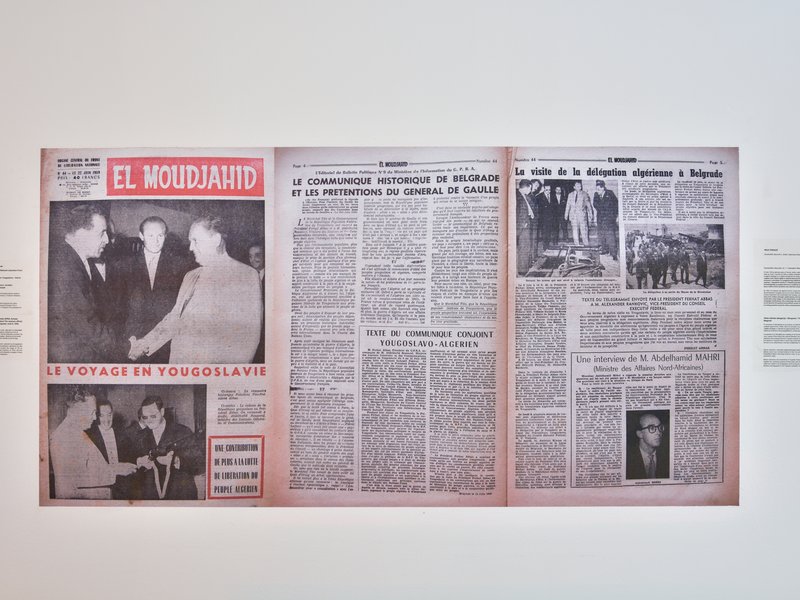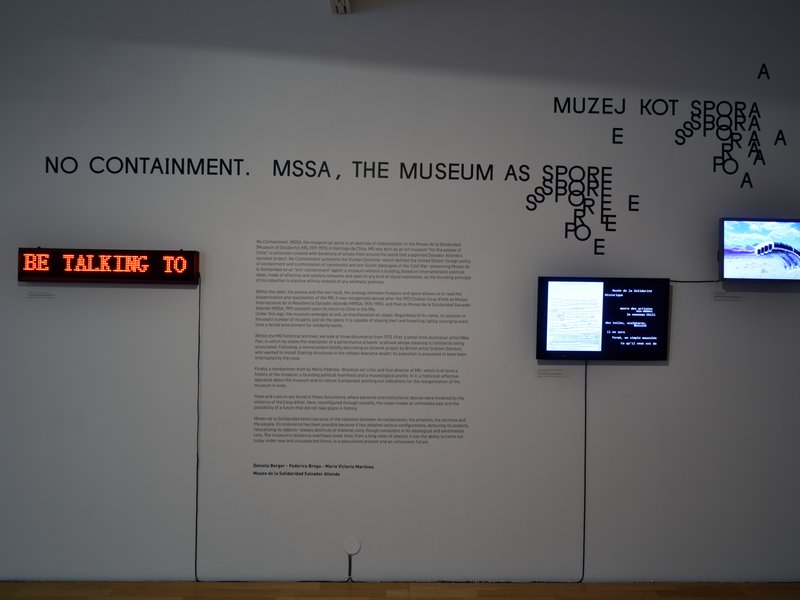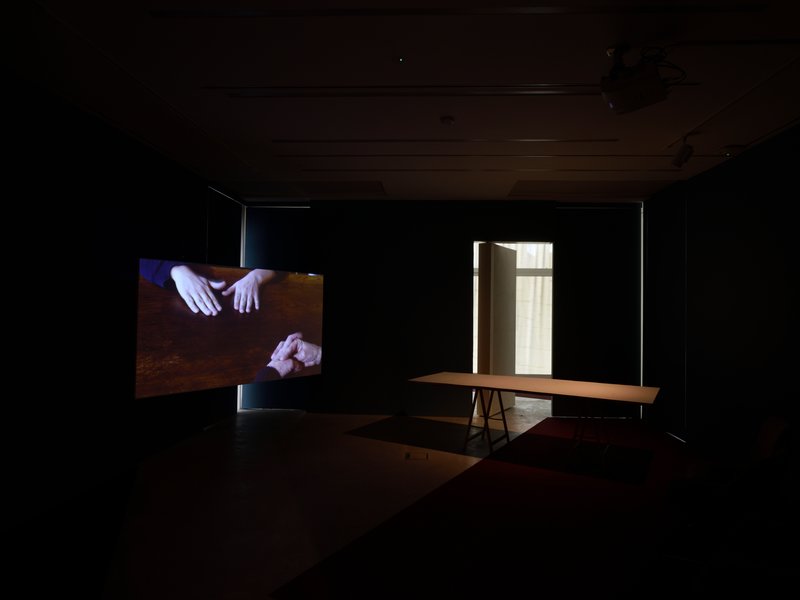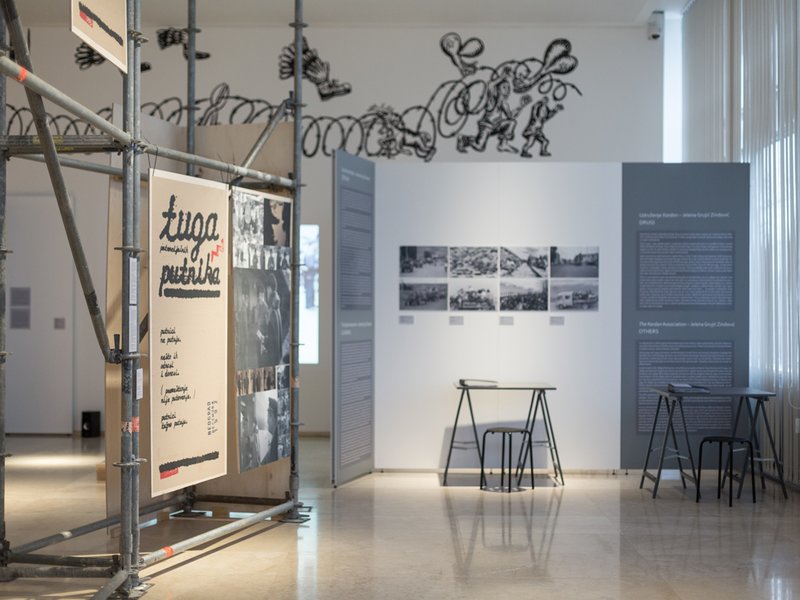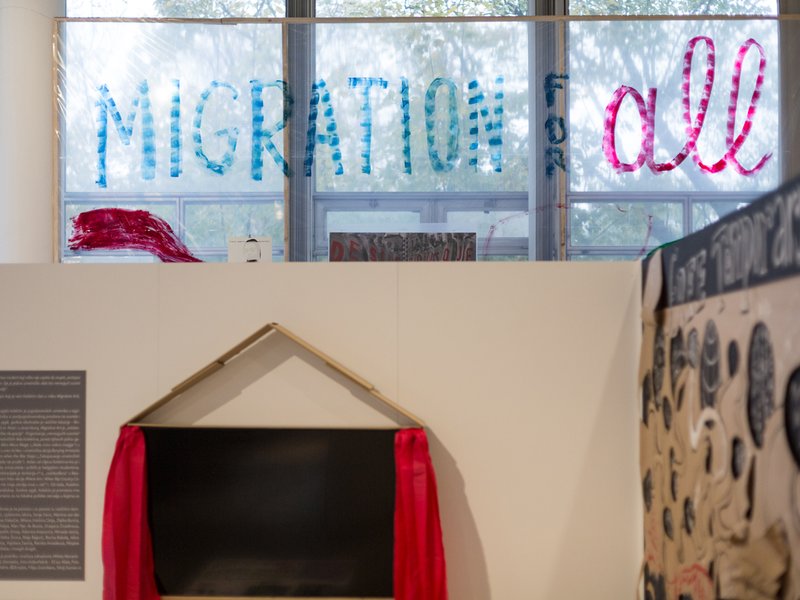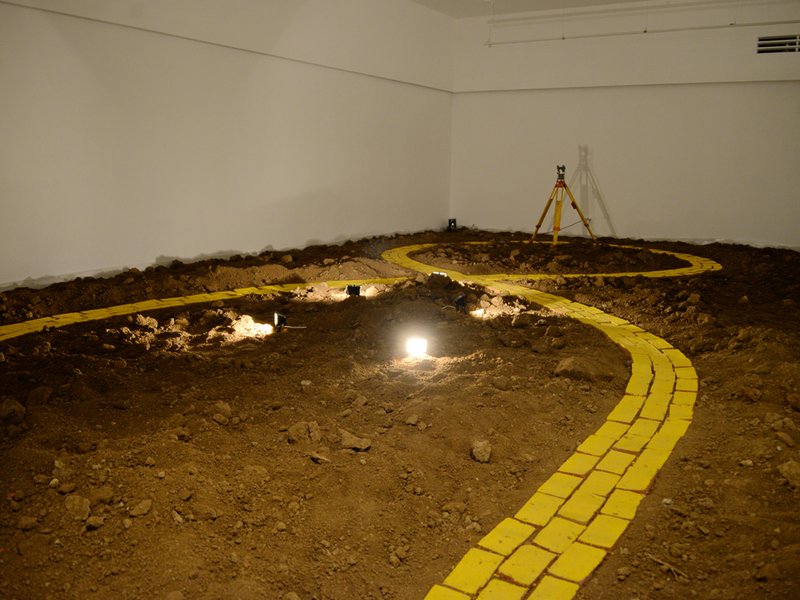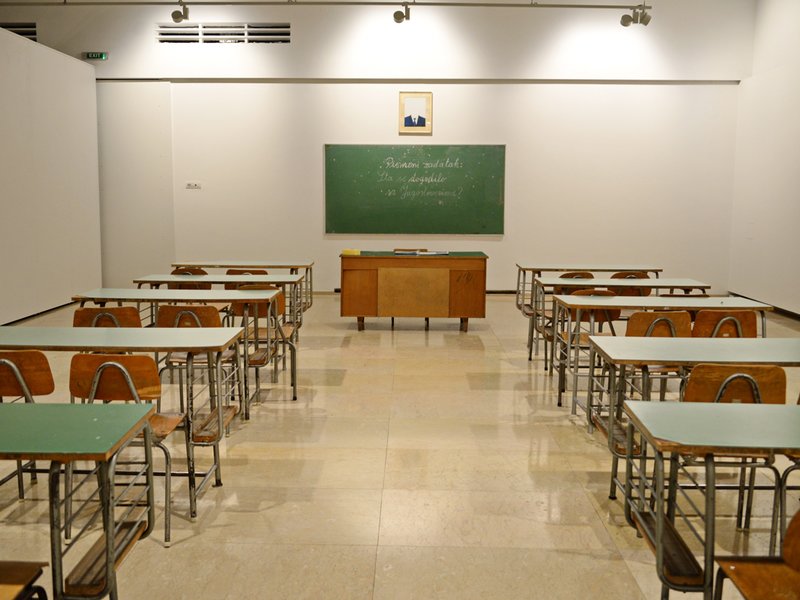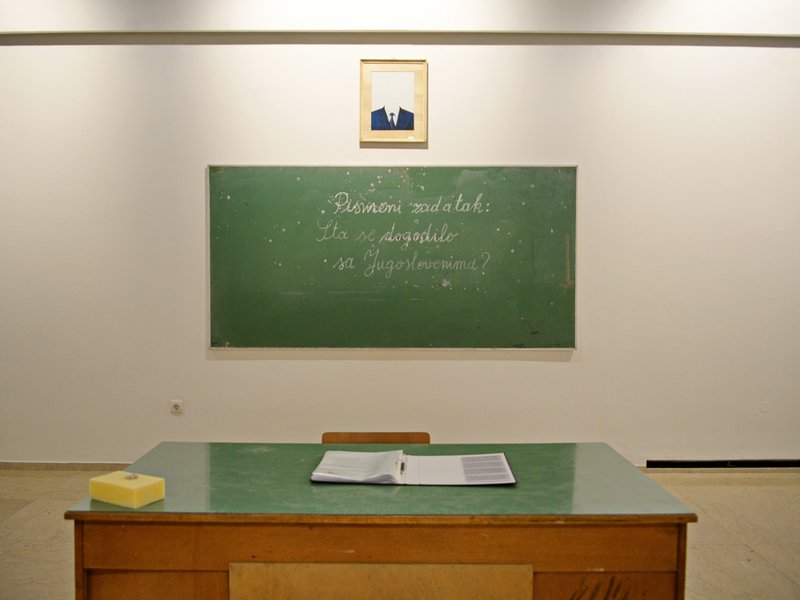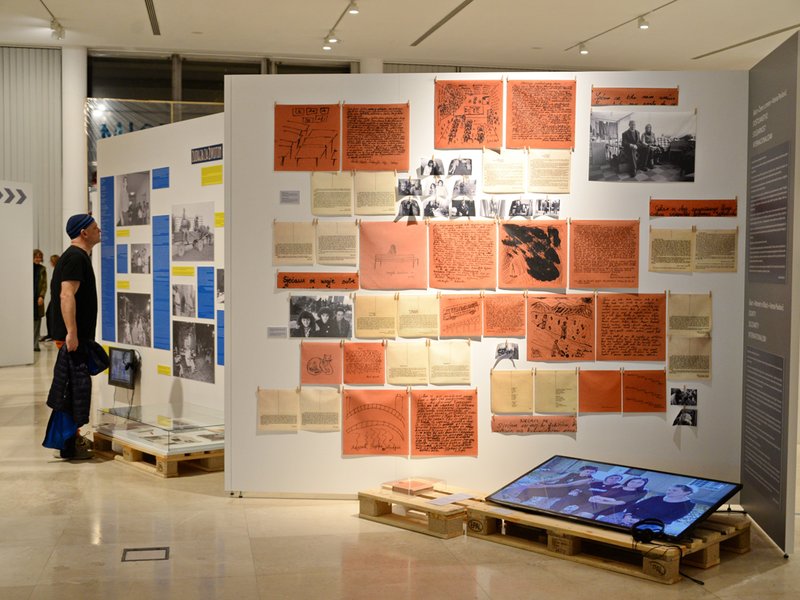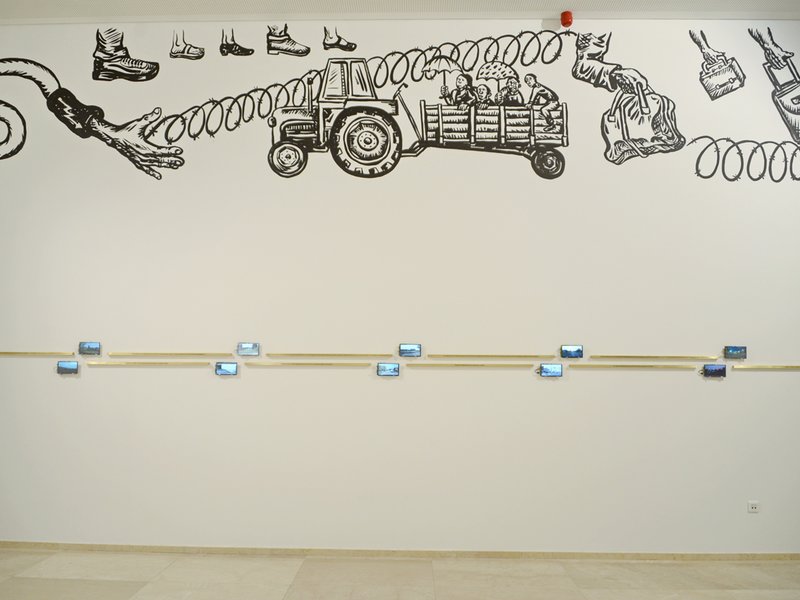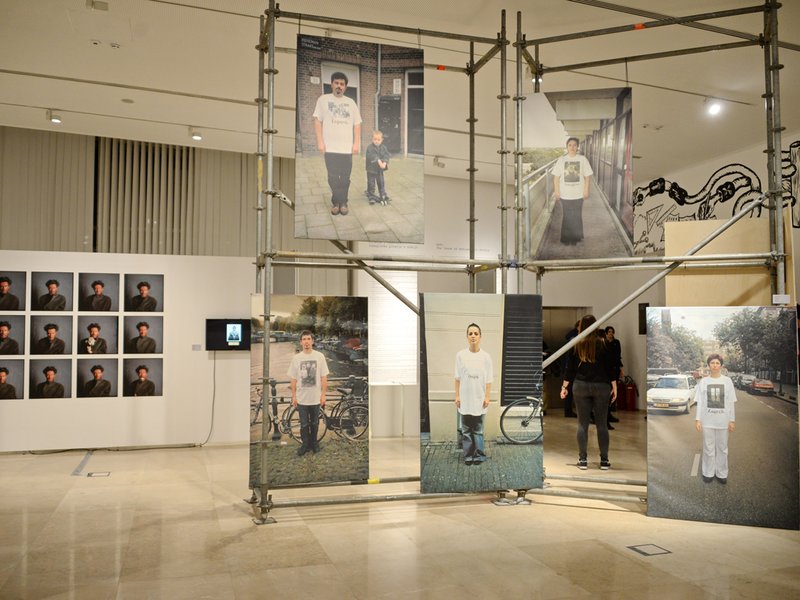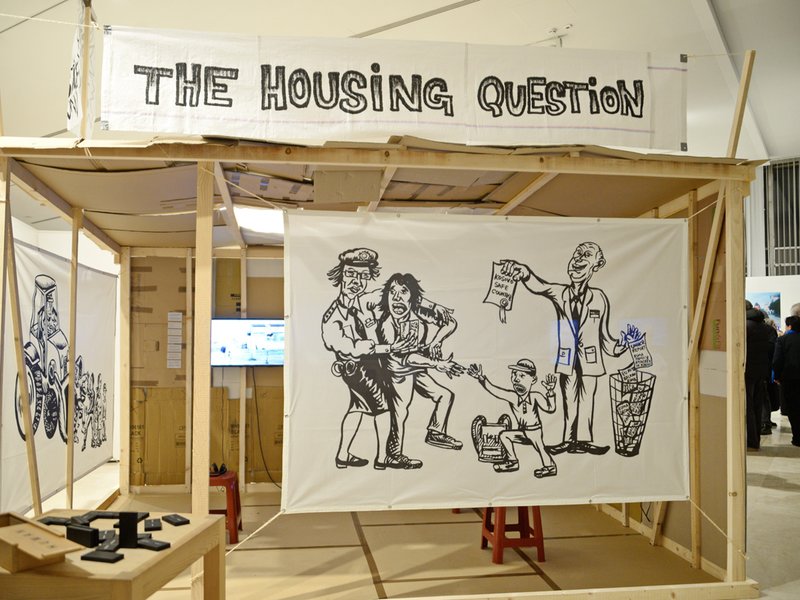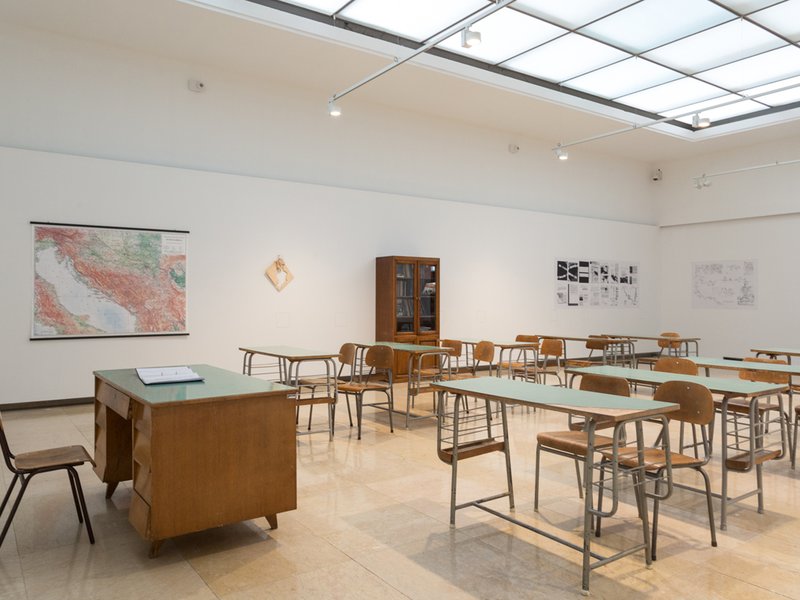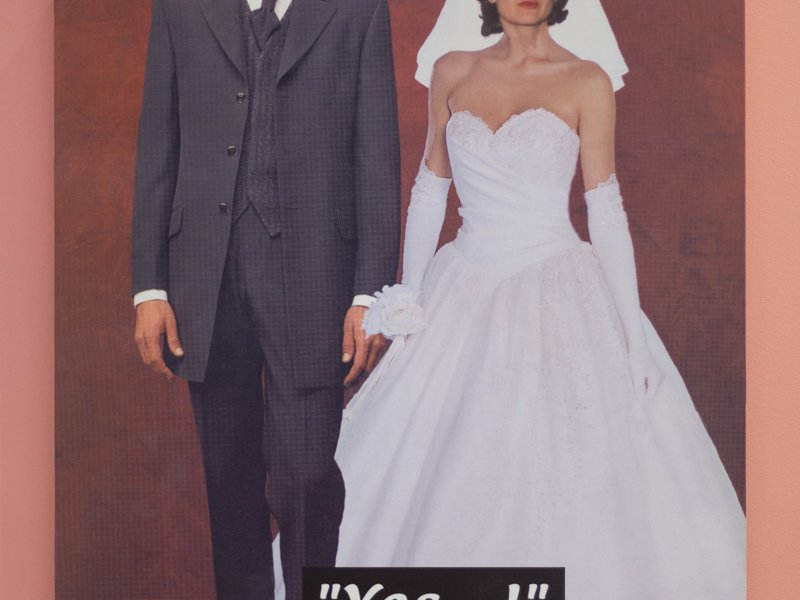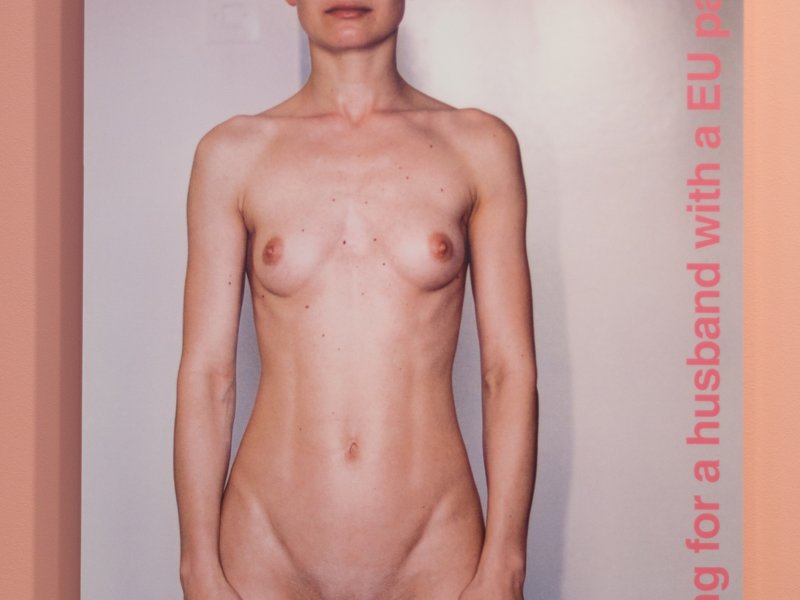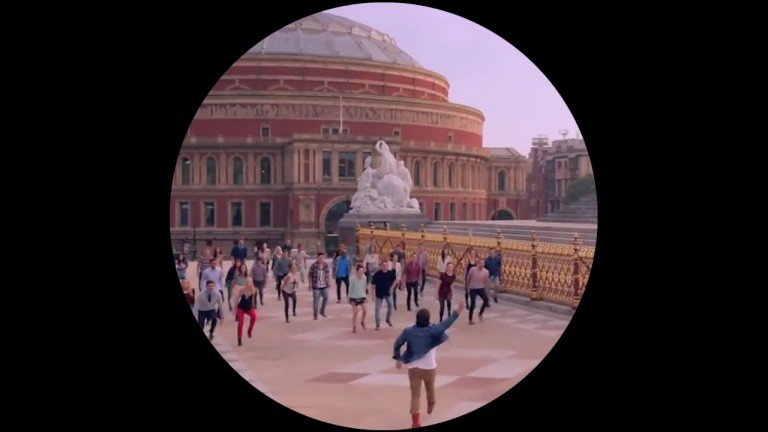
This Is Water
This exhibition looks at the long histories of migration that have forged the current shape of the UK. It is about the rich languages, cultures and identities that are formed by many ethnicities and nationalities coming together. It highlights the dominance that some groups of people hold over others and the damage that racism continues to have.
As the UK breaks from the European Union, and pursues austerity and anti-immigration agendas, discussions around xenophobia, social cohesion and the state of multi-culturalism are increasingly relevant. At the same time, vital voices are sharing the experiences of people of colour in the UK through music, journalism, fictional writing and art. Histories of black Britons as far back as Roman times are gaining attention.
Middlesbrough is a town founded on the rapid immigration of workers in the nineteenth century. In order to support understanding and solidarity, this project finds commonalities and shared experiences between those who are now considered white but who were once excluded on terms of ethnicity and race (e.g. Irish, Italian) and those who continue to be marginalized (e.g. Eritrean, Pakistani).
The display includes art, personal memorabilia, and archival documents and films. Materials from Teesside Archives and North East Film Archives share some of the area’s nuanced histories. Quotations, poems, articles and videos bring broader perspectives on experiences of people of colour in the UK, and how current policies are impacting people’s lives.
During the exhibition, we create a repository of the stories and voices from the Tees Valley and we ask our publics to join conversations about the complex identities that form our region. This gathering of untold stories creates a platform for overlooked voices.
The show includes eight artists: Nika Autor, Lucy Bridger, Ladan Hussein (Cold Specks) and Seth Pimlott, Jasleen Kaur, Andreja Kulunčić, Alenka Pirman, Erika Tan, Katarina Zdjelar. Their works raise topics as varied as: how we imagine foreign peoples and places, the rights and experiences of migrant workers in the EU, and the continuing impact of the British Empire.
Artworks
Jasleen Kaur 1986
YOOROP 2017 Single channel video, colour, sound, 5 mins 50 secs

Jasleen Kaur’s video YOOROP shows something of the complex relationship between India and the UK. Her footage is taken from popular Indian cinema show characters moving through cities and rural areas in the west. Scenes of London, Paris and the Alps show a romanticised version of Europe, experienced as a place of youth, beauty and freedom.
While in the UK many images and representations of India construct an invented imagination of the country, Kaur offers the reverse gaze. This is further complicated in YOOROP by the inclusion of many buildings and monuments that celebrate or connect to the British Empire, through which India was subjected to British rule between 1858 and 1947. The carpet included in Kaur’s work, used in many Gurdwaras (Sikh temples) and British Asian homes, evokes the houses in which Kaur watched many Indian films as a child in Glasgow.
Kaur worked with MIMA throughout This is Water to make a new work with local people that looks at belonging and exchange through food.
Edited by Jasleen Kaur and Marianna Simnett Music by Leo Chadburn Commissioned by V&A Museum and Goethe Institute for ‘Collecting Europe’.
Lucy Bridger 1990
Soft Serve 2016 Single channel video, colour, sound, 3 mins
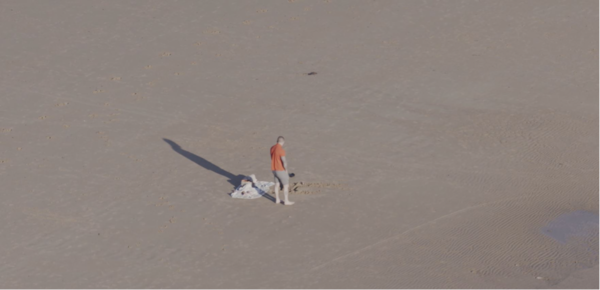
Lucy Bridger’s video Soft Serve is a portrait of the seaside town Redcar, in the Tees Valley, that focuses on the Pacitto ice cream parlour. Pacitto’s, named after the Italian owners, seems to have been in existence since the mid 1940s. The parlour reportedly created the ‘Lemon Top’, a locally famous dairy ice cream, topped with lemon sorbet – a symbol of combined cultural influences.
Soft Serve shows young women working in the café alongside older people enjoying leisure time. Other scenes in Soft Serve show Redcar’s beach with monumental shore-side steel works, which closed in 2015 creating job-losses and uncertainty in the area. Bridger offers a gentle portrait of a place during a time of change; the tumult of the industrial closures contrast with the continuity and calm of the ice cream parlour.
Ladan Hussein (Cold Specks) and Seth Pimlott 1988, 1990
Season of Doubt 2015 Single channel black and white 16mm film, sound, 4 mins
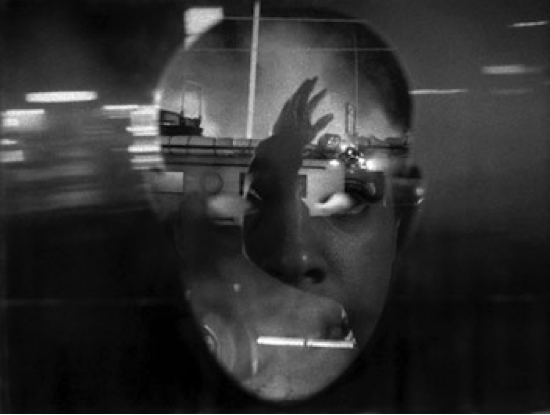
Season of Doubt is a collaborative film between artist Seth Pimlott and Ladan Hussein of the band Cold Specks. It was made for a song – Season of Doubt – written in 2014 by Hussein as a lament for injustice and violence in Ferguson USA.
In August 2014 Michael Brown, an 18-year old African American man, died after being shot 14 times by police. In the following hours and days, local people began to protest, claiming that Brown was shot unjustly, with his hands in the air. ‘Hands up, don’t shoot’ became a key phrase used against police violence.
Hussein sings to camera, with footage of the Ferguson protests projected around her. By showing recent events on the old technology of black and white 16mm film, Pimlott connects 2014’s protests with those of the 1960s Civil Rights Movement. The work was made as an in-camera collage rather than in post-production.
Alenka Pirman 1964
Arcticae horulae 1991–1998 Cotton, brass, gelatin silver print and paper, paper and ink
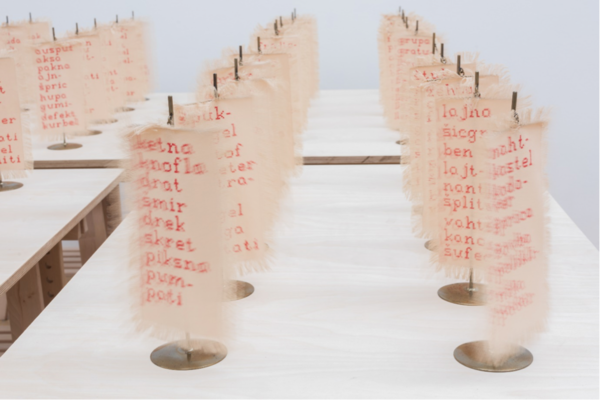
Arcticae horculae is a work about how the national identity of Slovenia is articulated through a shared language. 40 embroidered banners show German words that are used in everyday Slovene, but not allowed in formal use.
Slovenia (founded 1918) has an intricate history, with many languages and cultures coming together. Slovene language and literature are the foundation of its national identity and Arcticae horulae was the first Slovenian language grammar book. In 2004, The Public Use of the Slovene Language Act ruled that it must be the sole language used in many printed and broadcast materials.
Pirman’s Arcticae horculae was made for the National University Library in Ljubljana, Slovenia. Within this crucial site of identity, Pirman highlighted tensions between the country’s official and conversational languages. The hand-made pieces connect with craft or folk traditions often associated with local and informal histories.
Courtesy of Moderna galerija (Museum of Modern Art and Museum of Contemporary Art Metelkova), Ljubljana, Slovenia.
Katarina Zdjelar 1979
AAA (Mein Herz) 2016 Single channel video, colour, sound, 4 mins 30 secs
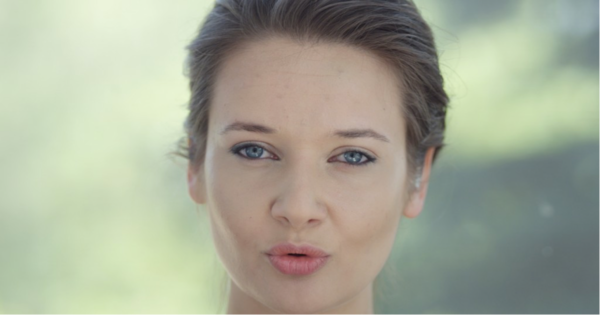
In Katarina Zdjelar’s AAA (Mein Herz), a young woman sings a composition created from four different pieces of music. The work could be read as a comment on the hybridity present in European cultures.
The four interwoven pieces are from diverse eras, and have different instruments, speeds, rhythms, and styles. Each is sung in its original style and language. The result is a single composition, made of fragments torn from their context that clash and collide in the voice of the singer. This film was made in a single take, with the camera focusing on the face of the performer.
In AAA (Mein Herz) moments of change and silence create a jarring sensation as we switch between varied cultural and historical references. The singer manages these transitions with poise and accuracy and in contrast with her vocal acrobatics, her face remains largely passive.
Performance: Barbara Kinga Majewska Image: Mikolaj Syguda, Laurent Fluttert, Katarina Zdjelar Sound: Robert Migas, Ting Fung Cheung, Katarina Zdjelar Directed by Katarina Zdjelar
Erika Tan 1967
The ‘Forgotten’ Weaver 2017 Single channel video, colour, sound, 29 mins 22 secs

Erika Tan’s video The ‘Forgotten’ Weaver centres on Halimah Binti Abdullah, a weaver brought to Wembley, London, from Malaysia, to perform as part of the Malayan Pavilion of The Empire Exhibition in 1924. The ‘Forgotten’ Weaver represents the many characters in history who have been overlooked and undocumented in official archives and collections.
The Empire Exhibition was a forum for Britain to show its political, economic and technological power. Abdullah demonstrated craft techniques and lived with 19 other Malay people in the pavilion. The demonstrators were expected to perform as ‘native’ people typical of a whole culture – treated as living specimens. Abdullah died from pneumonia while in London and is buried in an unmarked grave.
In sections of the work, filmed in the National Gallery of Singapore, Malaysia, choreographer Som Sai uses Malayan dance to convey a version of the character of the weaver. A group of female Chinese women debate representation, the legacy of the British colonial rule, and the expression of identity in craft.
Commissioned by The National Gallery Singapore and Balik Kampong - a return by proxy, supported by The Arts Council England
Nika Autor 1982
Newsreel 63 2017 Single channel video, colour, sound, 39 mins
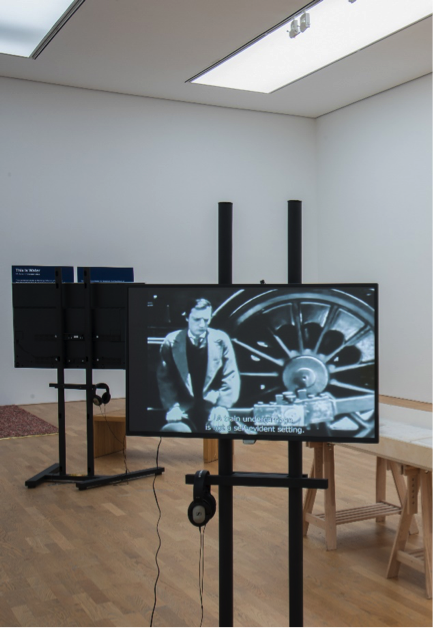
Nika Autor’s Newsreel 63 is about the influence of images and who has the power to use them. It begins with a fragment of film taken on a mobile phone by refugees travelling from Belgrade to Ljublajana. The clip shows men lodged underneath the carriage of a train as it moves at speed.
Through archival footage, Autor moves through some of the political and social uses of train travel, and the development of film. Her voice-over describes the railway as a symbol of optimism, modernization and improvement, as well as the associations in film history between the railway and homelessness and destitution.
At its close, Newsreel 63 returns to the refugee plight through scenes of young men in a desolate landscape making fires from railway sleepers for cooking and washing. The film shows railway travel as a mechanism for survival, used in search of a better life, and in the pursuit happiness.
Editing: Nika Autor, Ciril Oberstar Music: Matevž Kolenc, Miha Šajina Voice: Pia Nikolič Translation: Maja Lovrenov Production: Museum of Contemporary Art Metelkova / Koroška galerija likovnih umetnosti
Folk: The Billingham Folklore Festival 1965 Single channel video, colour, silent, 16 mins 16 secs
Inter-Tie (The Teesside International Eisteddfod) 1970 Single channel video, colour, sound, 10 mins 21 secs
Huddersfield International Club Opening Night 1968 Single channel video, colour, sound, 3 mins 17 secs
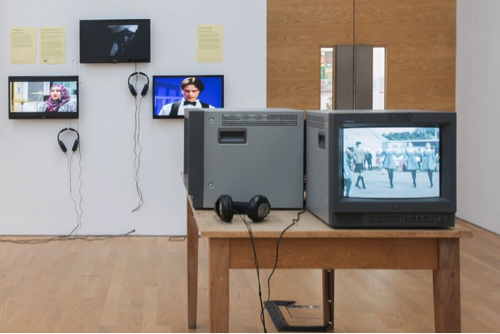
The collection of archival films document communities in North East England coming together to share and celebrate world cultures. Folk: The Billingham Folklore Festival and The Cleveland Inter-tie (Tees-Side International Eisteddfod) record festivals of music and dance held in Billingham and Middlesbrough respectively. One film follows the earliest Billingham festival (1965), which continues today, while the Inter-Tie ran from 1966 to 1978. Both festivals have raised awareness of diverse cultures and foster an understanding of heritage.
Huddersfield International Club Opening Night records the launch of a nightclub which was a place for people of different nationalities to come together in Huddersfield. This film creates a stark contrast to the famous 1968 ‘Rivers of Blood’ speech delivered by Conservative MP Enoch Powell in Birmingham one week before the club opening. Powell’s racist speech about migration inflamed racial tensions across Britain.
Produced and loaned by North East Film Archive at Teesside University, Middlesbrough.
All In Youth Project
Why I Wear The Hijab 2016
Single channel video, colour, sound, 24 mins 20 secs
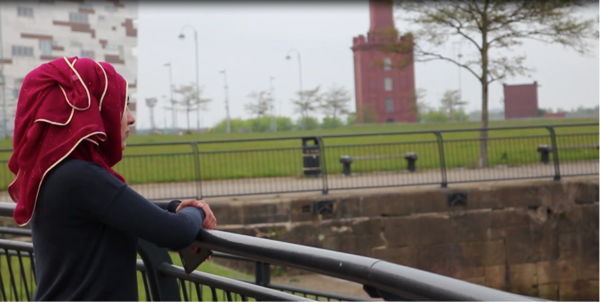

Why I Wear The Hijab is a video documentary produced by a group of young Muslim women living in Middlesbrough. They describe their experiences of wearing the hijab; a fabric veil worn by some Muslim women to cover their head, hair and neck. The covering is a symbol of modesty, privacy and devotion to the religion of Islam. The women raise awareness of why they prefer to wear the hijab and challenge the view held by many non-Muslim people that it is a sign of women’s oppression.
The All In Youth Project supports young people, predominately from ethnic minority backgrounds, in the Tees Valley. It gives young people crucial development opportunities primarily through the creative arts and informal education activities.
Film by Ben Ssebuufu. Courtesy of All In Youth Project. Special thanks to Teesside University
Reni Eddo Lodge 1989
About Race with Reni Eddo-Lodge 2018 Audio podcast
Things Can Only Get Better 25 mins 16 secs White Season part 1 25 mins 16 secs White Season part 2 23 mins 29 secs Political Blackness 29 mins 50 secs Shout Out Miss Beep part 1 19 mins 44 secs Shout Out Miss Beep part 2 26 mins 31 secs White Women Crying is Racist! 26 mins 26 secs The Anti-Racist Renaissance 36 mins 15 secs The Big Question 39 mins 15 secs
Reni Eddo-Lodge’s About Race podcast explores the subject of race in Britain from the 1990s to the present day. Eddo- Lodge traces recent history and interviews key individuals engaged in anti-racist activism including rapper, poet and political activist Akala; musician Billy Bragg; comedian, writer and actor Meera Syal; and current Shadow Home Secretary Diane Abbott MP.
Eddo-Lodge investigates topics ranging from the representation of people of colour and the white working class in the media; the place of the far right in Britain; and the use of the word ‘black’ as a political term. The audio recordings follow Eddo-Lodge’s acclaimed 2017 book Why I’m No Longer Talking to White People About Race. In this, she examines systemic racism which, internationally or not, places people of colour at a disadvantage to white people in society because of the colour of their skin.
Funded by Arts Council England Producer: Renay Richardson
Courtesy of Teesside Archives, This is Water included a number of documents that gathered historical information regarding the movement of immigrant workers into the Teesside area.
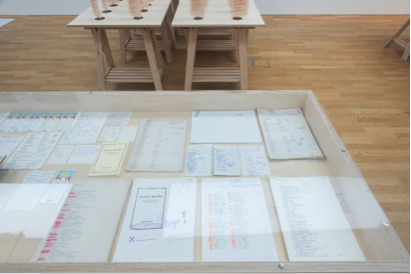
- Lists of names of Norfolk immigrants to Cleveland County (including some fringe areas of North Yorkshire) from the 1871 census. Compiled by T.E. Chivers. Indexed by John P. Perkins.
- Letters of correspondence concerning the recruitment of Irish workers to the Cleveland Iron and Steel industry. Letter to Mr Palmer from Thomas E. Slater (UK Permits Office) August 1941. Excerpt: ‘I was recommended to go to Wexford and contact the Manager of the district labour exchange, who will advise me where to look for men. The Irish Govt. does not instruct unemployed persons to take up work in England; the men must voluntarily apply for it. In the Wexford district I will sign on 50 men, fill in the employment certificates which I must hand to the Garda (Civic Guard) if the men do not already possess travel permits- quite a number of men have them I’m told’.
- Letter from Mr Hutchence (Director of Labour Supply) to H. Slater. Sept 1941. Excerpt: ‘Mr Slater has returned from Ireland and although he has gained on about 200 men the prospect of getting any considerable number of these over here are doubtful as some are being rejected by the United Kingdom Permit Office’. ‘We are informed that allowances made by the Ministry of Labour for workers who leave home for war work do not apply to these men from Ireland. The allowances laid down in Ministry of Labour leaflet No. E.D. 59 include free travelling warrant and a payment of 10/- if the journey lasts longer than four hours: a lodging allowance to married or unmarried men maintaining a separate home of 3/6 per night including Sundays’.
- List of workers engaged by Messrs. Dorman Long & Co. Ltd. Middlesbrough. Indicates place of birth as Ireland for all workers. c. 1942
- List of workers from Eire (Ireland) engaged by Pease & Partners at Lingdale Ironstone Mine.
- Copies of pages from H.G. Reid. Middlesbrough and its Jubilee book: A History of the Iron and Steel Industries . Published 1881
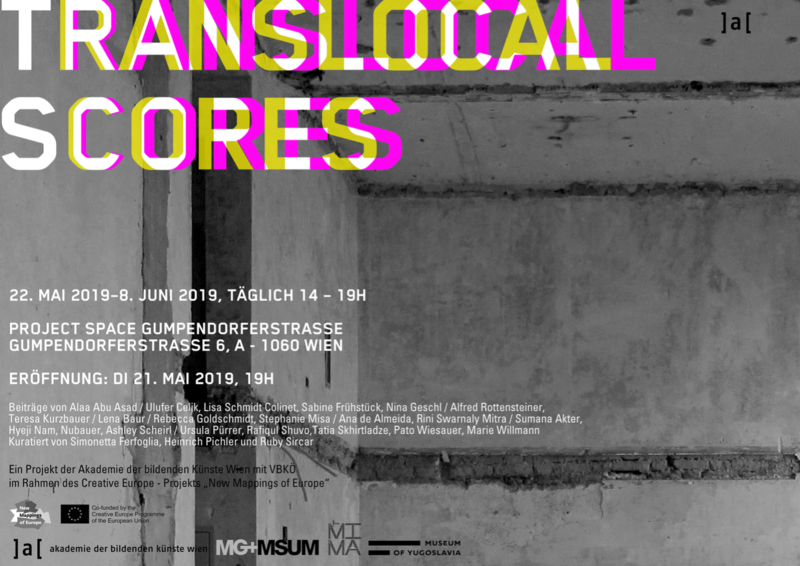
Translocal Scores + Translocal Archives
Translocal Scores
The exhibition in two phases presents, develops and picks up strategical inventions and dispositives, that are able to override distances - in a conceptual field, but as well in very concrete forms of translocality as a spacial/temporary dimension. As a start, constellations of artworks have presented that form up around such concrete fields of activities and methodological approaches - device, displacement, lair and journey, activism, flight. They have been generated in a dialogical process with the involved artists, who thus expose themselves to personal experience, and include agents from external networks.
In the temporary Project Space Gumpendorferstrasse, a disused and radically skeletonized groundfloor space, the works are located in analogous spacial constellations, however, communicate comprehensively via the immanent topic of translation - between contexts of provenance, class, and gender, between languages, imaginaries, and forms of action.
The exhibition setting of "Translocal Manoeuvres" is activated by a series of dialogical guided tours and community-building events. This productive element of the presentation inform the second phase of the project, the "Translocal Archives", which will focus on film and media, urban narratives, mediation, and archives.
Tuesday, 21 May 2019, at 7 p.m.
Opening at Project Space Gumpendorferstrasse 6, A - 1060 Vienna
Friday, 31 May 2019 and Friday, 7 June 2019, at 4 p.m.
Curator's guides and artist talks
Wednesday, 5 June 2019, at 7 p.m.
An exhibition-review with Andreas Spiegl + A performance by Hyeji Nam + Sound by Marie Willmann & Pato Wiesauer
Exhibition duration: Wednesday, 22 May – Saturday, 8 June 2019, 12 p.m. to 6 p.m.
Works by: Pato Wiesauer, Sabine Frühstück, Lisa Schmidt Colinet, Ashley Scheirl / Ursula Pürrer, textile designer / unknown Alaa Abu Asad / Ulufer Celik, Marie Willmann, Tatia Skhirtladze Rini Swarnaly Mitra / Sumana Akter, Stephanie Misa / Ana de Almeida, Teresa Kurzbauer / Lena Baur / Rebecca Goldschmidt, and a book by Birgit Jürgenssen and Lawrence Weiner Nina Geschl / Alfred Rottensteiner, Hyeji Nam, Nubauer, Shuvo Rafiqul Natalie Deewan, Hanna Reiner
Curated by: Simonetta Ferfoglia, Heinrich Pichler and Ruby Sircar
All images © gangart
Translocal Archives
In this second phase and after the "Translocal Scores" at the temporary Project Space Gumpendorferstrasse 6, the exhibition is moving into the site of the VBKÖ - Association of Austrian Female Artist. Here the new or, in relation to the altered referencial conditions, newly formulated contributions articulate strategies of observation, tradition and activation. At the same time they communicate comprehensively via the immanent topic of translation between contexts of provenance, class and gender, between languages, imaginaries and forms of action. The works pick up strategical inventions and dispositives, that are able to override distances - in a conceptual field, but as well in very concrete forms of translocality as a spacial/temporary dimension. It is essential to encourage shaping of environments through citizen engagement, while transcending traditional boundaries of the artfield. In that respect, a mutual exchange with the rich archive of the VBKÖ is as well subject to the exhibition as the discoursive moments and community activities, city walks and interventions in public space, that make up a constituent part of the "Translocal Archives".
As accompanying programme to the exhibition, a city walk in 1050 Vienna with Natalie Deewan and Tomash Schoiswohl, the film programme "Mehrgenerationenunternehmen", curated by Rafiqul Shuvo and Ruby Sircar, a screening of the video programme "Transcending Fantasy, curated by Rosa Wiesauer, and a curator's guide with Vida Bakondy / Amila Širbegović will take place. The events are going to be announced seperately.
Contributions by Vida Bakondy / Amila Širbegović, Shabnam Chamani, Irene Lucas, Marie Willmann, Hyeji Nam, Tatia Skhirtladze, Natalie Deewan, Andi Dvorak, Philipp Harder, Tomash Schoiswohl, Sabine Frühstück, Rosa Wiesauer, Nina Geschl / Fabio Otti, Teresa Kurzbauer / Lena Baur / Rebecca Goldschmidt, Pia Nagl / Laura Molnar, Georg Reiter / Veronica Schramek, Rafiqul Shuvo / Ruby Sircar
Curated by Simonetta Ferfoglia, Heinrich Pichler und Ruby Sircar
Exhibition programme
Phraseology and the Migrating Museum
Irene Lucas – Workshop
Sunday, 30 June 2019, 11 a.m. to 2 p.m.
Transcending Fantasy
Rosa Wiesauer – curated video screening
Rosa Wiesauer, Sarah Podbelsek and Mika Maruyama – Talk
Thursday, 4 July 2019, 7 p.m.
Fluchtpunkt Wien – Symbolisations of Loss
Vida Bakondy and Amila Širbegović – Curators' Talk
Friday, 12 July 2019, 7 p.m.
City Walk 1050 Wien
Guided tour by Natalie Deewan and Tomash Schoiswohl
Meeting-point: 5erHaus, Grünwaldgasse 4, 1050 Wien
Saturday, 13 July 2019, at 4 p.m.
Preview:
Translocal Archives
VBKÖ - Vereinigung bildender Künstlerinnen Österreichs
Maysedergasse 2/28, A - 1010 Vienna
Opening: 27 June 2019, 7 p.m.
Exhibition duration: 28 June 2019 – 14 July 2019 with a program of curator's talks and city guides
All images © gangart
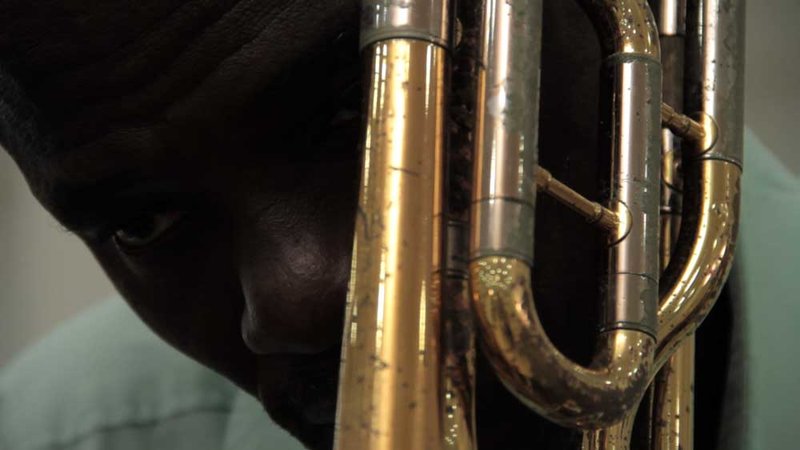
Southern Constellations: The Poetics of the Non-Aligned
Exhibition curator: Bojana Piškur
Opening: 7 March 2019, at 8 p.m.
Duration: 7 March – 31 August 2019
Venue: Museum of Contemporary Art Metelkova, Ljubljana
The Non-Aligned Movement (NAM) was a transnational political project, a coalition of small and middle-sized states, mostly former colonies and developing countries, from the global south or the Third World. It was formed in 1961 in Yugoslavia at the Belgrade summit. The NAM represented the first major disruption in the Cold World map, a quest for alternative political alliances, for “alternative mondialisation”.
The exhibition Southern Constellations: The Poetics of the Non-Aligned emphasizes the ideas, ideals and principles of the movement, particularly in close connection with its cultural policies and place them in a contemporary context with the question: Could there be a non-aligned contemporaneity? And if so, what would it be like? However, the topics covered in the exhibition are not to be considered some kind of exoticism of the past, nor do they harbor nostalgia for the movement itself. Instead, the focus is on the way the “southern constellations” envisioned forms of politics that took as their starting point the life of peoples and societies that had been forcibly relegated to the margins of the global economic, political and cultural system. Struggles against poverty, inequality, and colonialism in the world system coupled with transnational solidarity which took many concrete forms could be included in a reconsideration of the history and legacies of the NAM today.
Consequently, NAM’s cultural politics strongly condemned cultural imperialism and epistemic colonialism. Western (European) cultural heritage was to be understood in terms of “juxtaposition”; this heritage would be interwoven with and into the living culture of the colonized, and would not simply be repeated under new (political) circumstances. Therefore art and culture in the NAM were largely about politics and history, or to put it differently, they were a way of staking a claim to history. It seems the movement was somehow aware of the fact that this was the only way it could enter the world’s (cultural) space on an equal footing.
There existed a heterogeneous artistic production, a variety of cultural politics and extensive cultural networks which enriched the cultural landscape of the NAM and enabled discussions about the meaning of art outside the Western canon, which is being presented for the first time at the Southern Constellations exhibition. It includes not only the (mostly political) reasons for the collaborations but also specific examples of exhibitions, collections, institutions, archives and works of art. Contemporary artistic interpretations are also included in the exhibition and placed in dialogue with older works. They derive from reflections on how it might be possible today – in these times of increasing global inequality, crises, and the ever-widening chasms between the rich and the poor – to still think about some other, fairer world order, an order that the NAM once actively pursued.
Participants: Dan Acostioaei | Art Pavilion Slovenj Gradec (Andreja Hribernik, Katarina Hergold Germ) | Sven Augustijnen | Babi Badalov | María Berríos & Jakob Jakobsen | “Cartography of SFR Yugoslavia’s International Collaborations in Culture with Developing Countries” (Teja Merhar) | Godfried Donkor | “From Bandung to Belgrade” (Riksa Afiaty, Iramamama, Sekarputi Sidhiwati, Syaiful Ardianto) | Gallery of Art of the Non-Aligned Countries “Josip Broz Tito” (The Contemporary Art Centre of Montenegro) | “Gorgona in Jakarta – on the Cutting Edge of the Edge?” (Nada Beroš) | Ferenc Gróf | Olivier Hadouchi | Aya Haidar | Ibro Hasanović | Ibro Hasanović in collaboration with Ahmad Adelian, Ahmad Yaman Fetyani, Abdelkadeer Itatahine, Yordanos Haile, Amin Hasan, Romat Hasan, Ahmed Shihab Hammood, Oussama Lahmaza, Masoomah Manafi, Zeinab Manafi | Siniša Ilić | Naeem Mohaiemen | Museum of African Art – the Veda and Dr. Zdravko Pеčаr Collection (Emilia Epštajn, Ana Sladojević) | Museum of Yugoslavia (Jovana Nedeljković) | Museum of Solidarity Salvador Allende, Santiago (Daniela Berger, Federico Brega, María Victoria Martínez) | “Re-Aligning the Asian Art Biennale” (Abhijan Toto, Ho Rui An, Chimurenga, "From Bandung to Berlin") | Dubravka Sekulić | Semsar Siahaan | “Third World: Prints from the Non-Aligned Countries at the International Biennial Exhibitions of Graphic Arts in Ljubljana between 1961 and 1991” (Bojana Piškur, Teja Merhar) | Mila Turajlić | Katarina Zdjelar
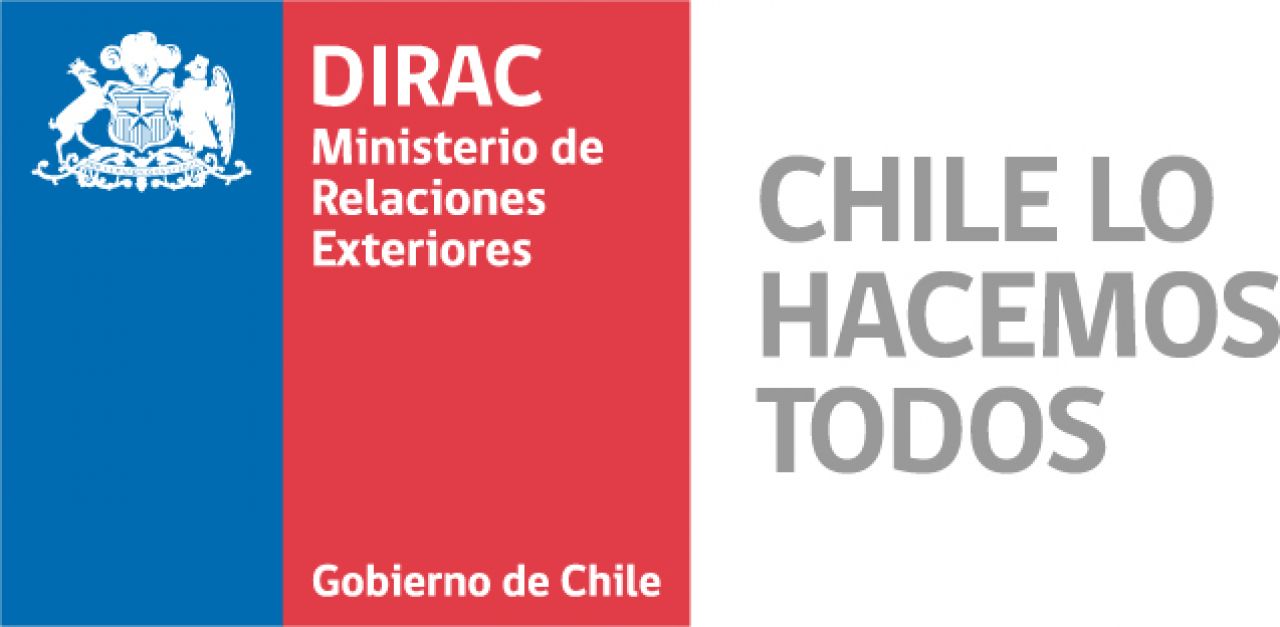 |
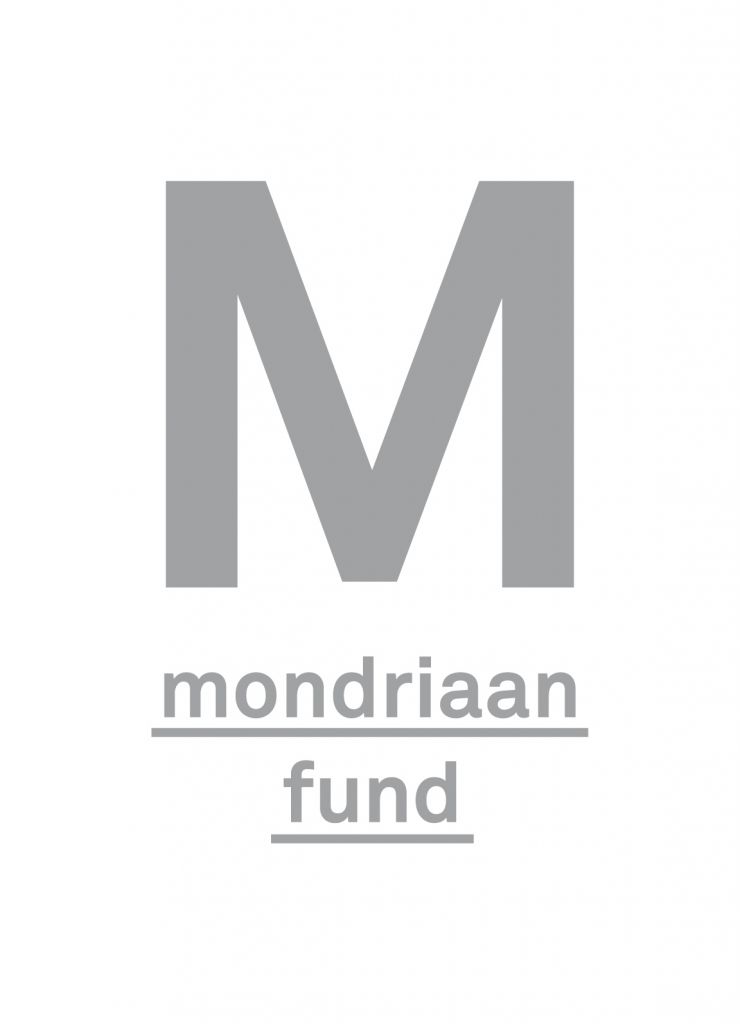 |
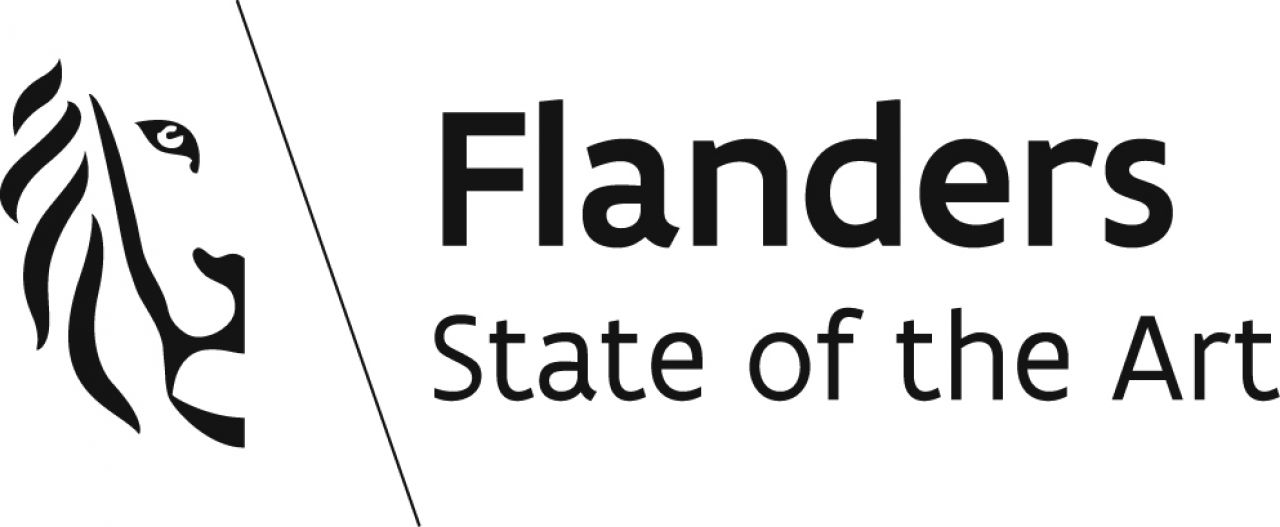 |
 |
 |
|
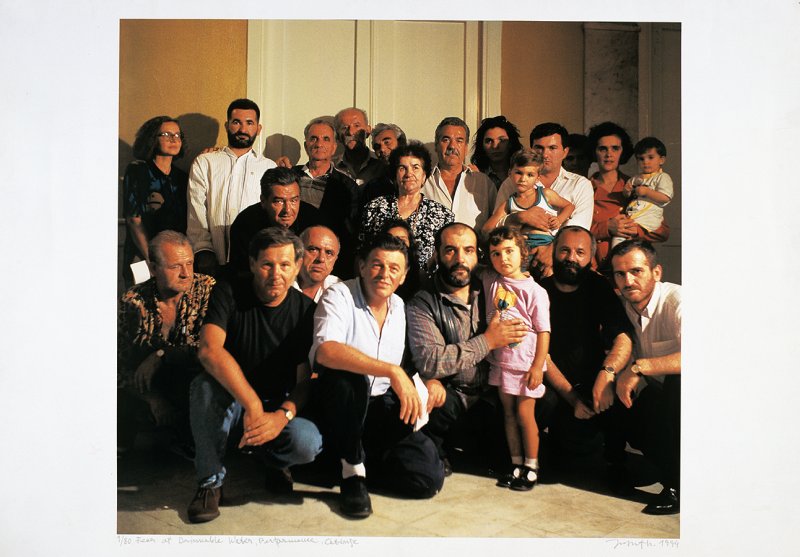
The Nineties: A Glossary of Migrations
The Nineties: A Glossary of Migrations exhibition will open on December 5, 2019, at 7 p.m. in the exhibiting space of the 25th of May Museum, part of the Museum of Yugoslavia complex. With this project and by organizing an exhibition dealing with the mass migrations of the population to and from Serbia over the course of the 1990s, the Museum of Yugoslavia aims to bring the heritage of the nineties to the forefront of current considerations. In place of documentary-historiography approach(es), which take a secondary position, the primary focus of the exhibition involves mapping the different forms of engagement that have transpired in the period from the nineties to the present, in which matters of legal, political, social and cultural issues that occurred in these extremely complex and traumatic migratory processes, were addressed via the medium of art.
Besides the artistic stances, the exhibition also includes individual initiatives and organizations from the spheres of activism and the civil sector, however, primarily those initiated by artists or those which involve the collaboration with artists and cultural institutions. Since the decisions made at the highest political levels, as well as various public policy measures, chiefly defined the statuses of people affected by migration movements, another narrative line was also introduced to the exhibition, and it can be traced through the selection of particular laws, political agreements, national strategies, official statistical reports and other documents, selected by the curators and all the exhibitors. Such an exhibiting structure aimed to shed light on the wider context in which the artworks and initiatives were created and to which they refer. The Glossary of Migrations resulting from the collaborative work of artists, associates and curators, consists of twenty-eight concepts that offer precise explanations of work, initiative and/or community. Such a glossary is an alternative to concepts and discourses which dominate acting and thinking about these problems in the spheres of the law, public policy and academia. In this way, we wanted to raise the issue of the reach and role of art and activism, and that of public institutions, in their attempts to reconstruct the past and reshape ‘common knowledge’ that dominates the public sphere.
The twenty-eight concepts, syntagms and idioms which shed light on the standpoints of the exhibited works, initiatives and communities, are as follows: Address, Unlawful Necessity, Cleaning, Man, Dignity/Solidarity/Internationalism, Courage or Cowardice, Inventory, the Erased, Yugoslavism, One-Way Ticket, Suitcase, Computer Cleansing/Futile Hope, Place, Unease, Unwanted (Others), Plan, Object, Friends, Holes, Safe Land, Free Temporary Territory, Stranger, Transfer, Sorrow, Uprising, Law, Land/Territory, Lust for Life.
The exhibition presents the works of more than twenty artists, four art groups and five activist initiatives and/or civil society organizations: Association Apsolutno, Aleksandrija Ajduković, Đorđe Balmazović, Dejan Dimitrijević, Dušica Dražić, Dionis Escorsa, Jusuf Hadžifejzović, Kiosk – contemporary art platform, Milena Maksimović, Goranka Matić, Migrative Art collective, Ana Miljanić, Milorad Mladenović, Ivana Momčilović/Loran Wanson, Tanja Ostojić, Vesna Pavlović, Nikola Radić Lucati, Vladimir Radojičić, Vahida Ramujkić, Rena Rädle/Vladan Jeremić, Bálint Szombathy, Nebojša Šerić Šoba (Shoba), škart, Čedomir Vasić, Group 484, Kardan Association, the Vojvodina Citizens’ Center, joint campaign Roof Overhead and Women in Black. Exhibitions curators are: Simona Ognjanović and Ana Panić (Museum of Yugoslavia); exhibition architect: Milorad Mladenović; visual identity: Zoran Pantelić. the exhibition was realized as part of the New Mappings of Europe project, supported by the European Commission – Creative Europe program and the Ministry of Culture and Information of the Republic of Serbia.
The exhibition will run at the Museum of Yugoslavia until March 1, 2020.
